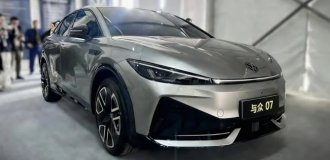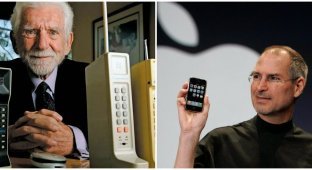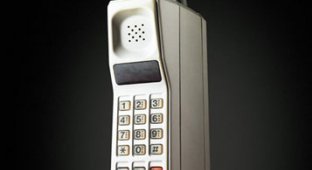The evolution of mobile phones (71 photos)
Back in 1983, there was a boom in the development of mobile phones. With each subsequent year, their design and capabilities became more impressive. This evolution was started by Motorola, which developed the world's first cellular DynaTAC. You can see it in the movie “Wall Street” in the hands of the greedy stock speculator Gordon Gekko. Next, we will present a selection of vintage cell phones that involuntarily evoke nostalgia for the old days. 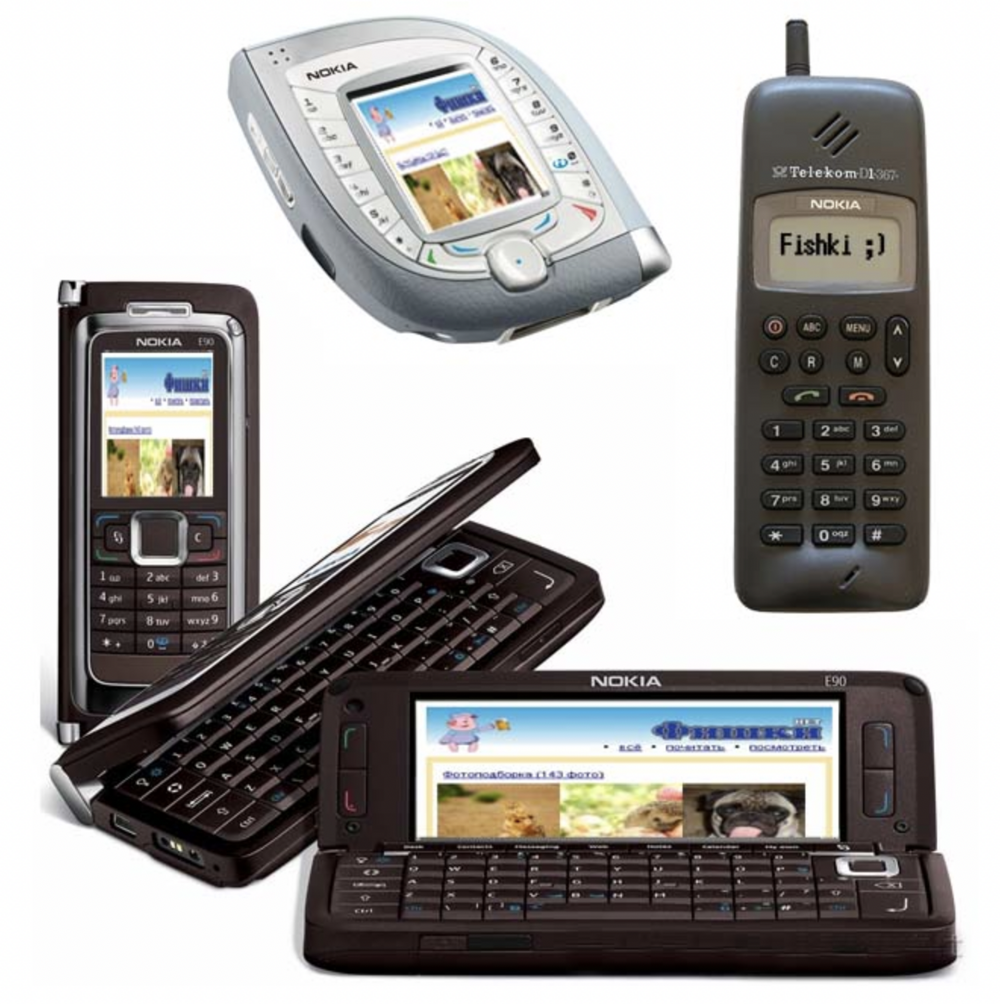
Motorola DynaTAC 8000X 
Motorola DynaTAC 8000X
June 13, 1983 marked the release of the DynaTAC 8000X mobile phone. Work on it took Motorola almost 10 years and more than $100 million. The device weighed 800 g. The characteristics were more than modest compared to modern ones: 30 contacts in the address book, 1 ringtone, 1 hour of talk time without recharging. The cost was almost $4,000. Today the model is classified as a retro phone.
1989 Motorola MicroTAC 9800X 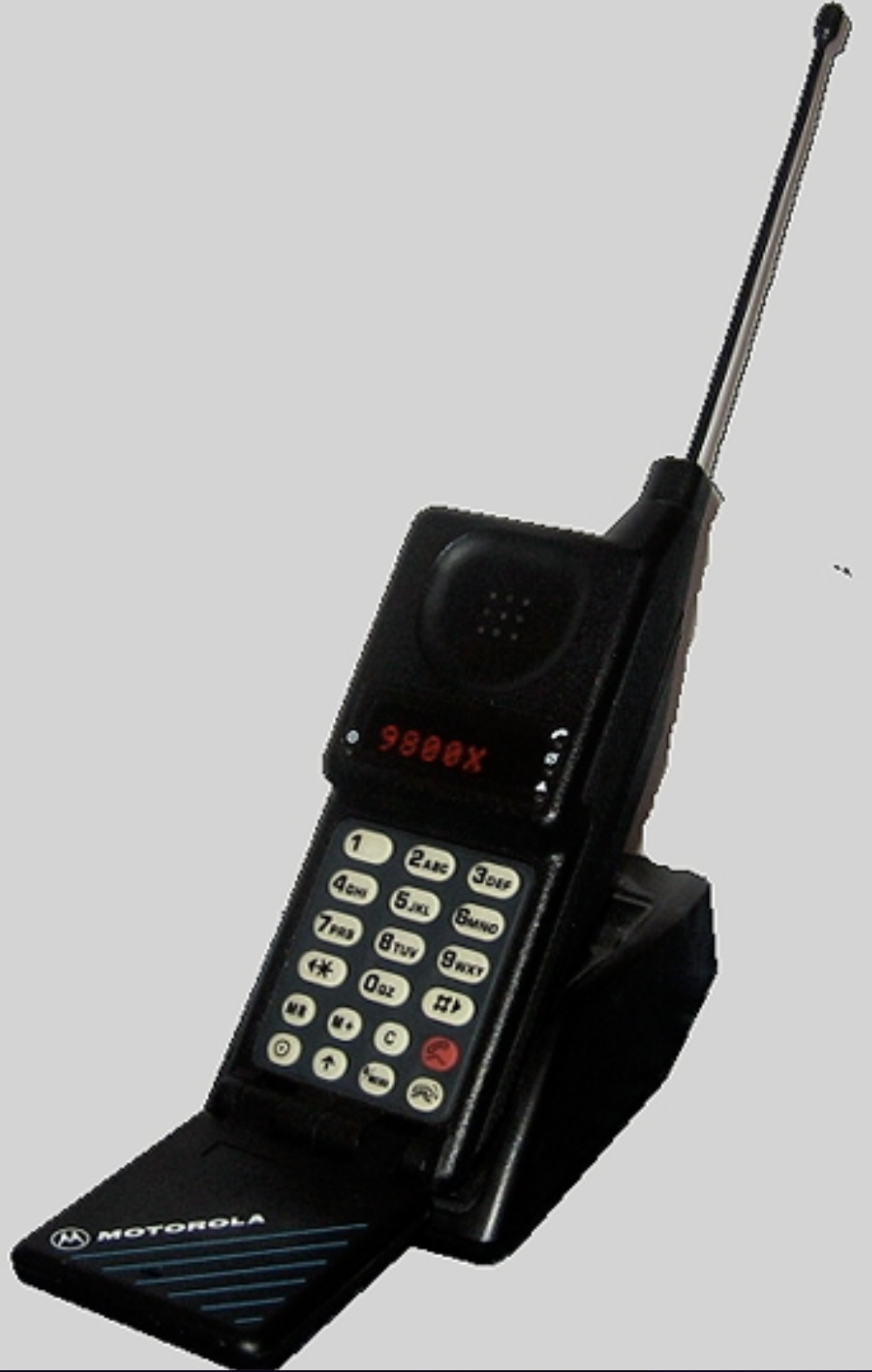
Motorola MicroTAC 9800X
This version had a more compact size; it can even be called pocket-sized. Previous cell phone models were quite bulky, making them difficult to carry around. Motorola MicroTAC 9800X had a flip-up lid and a monochrome 1-line screen.
Nokia 1011 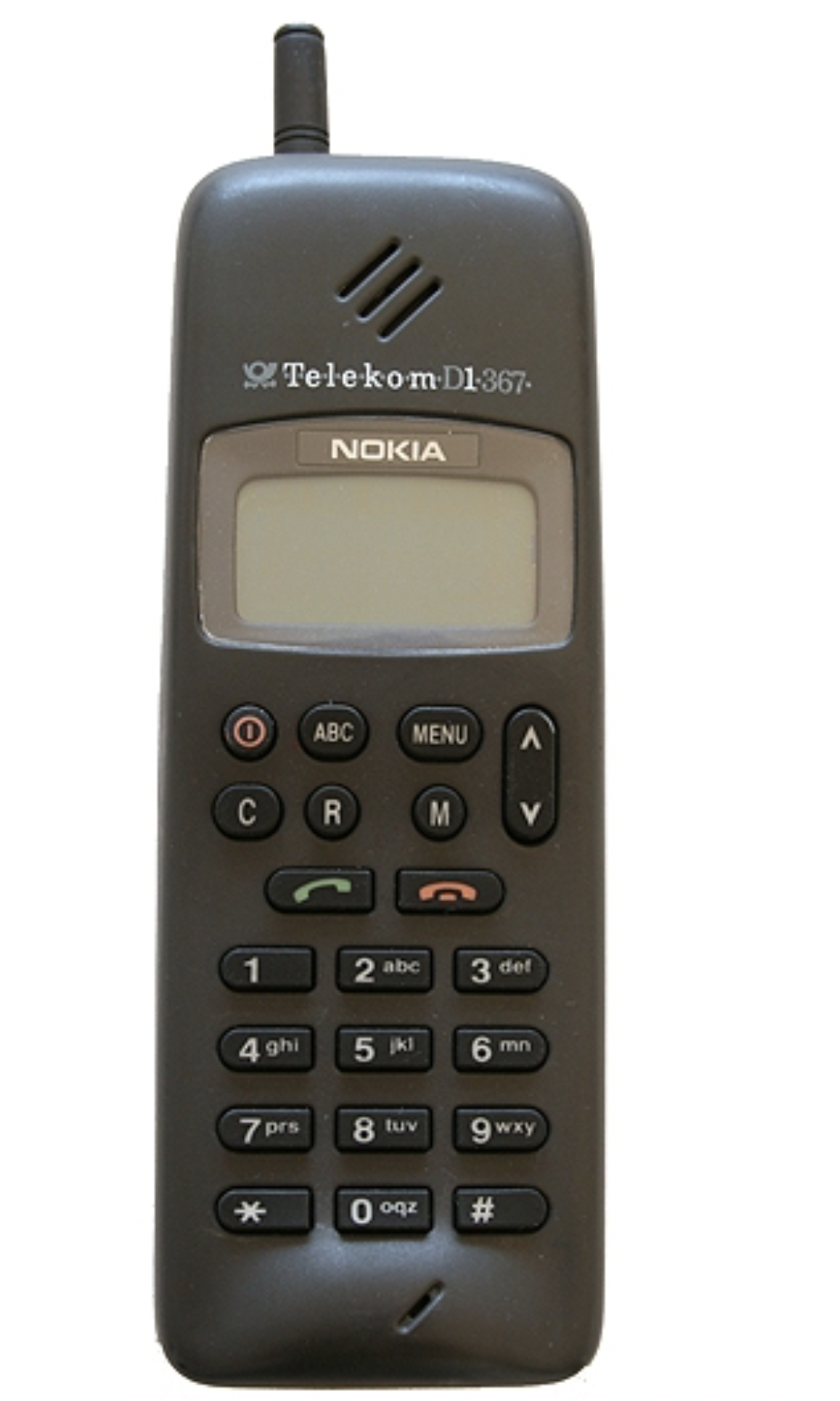
Nokia 1011
The first digital GSM mobile phone designed for the mass consumer. It was discontinued only in 1994. Allowed you to store up to 99 phone contacts and send SMS messages.
1996 Motorola StarTAC 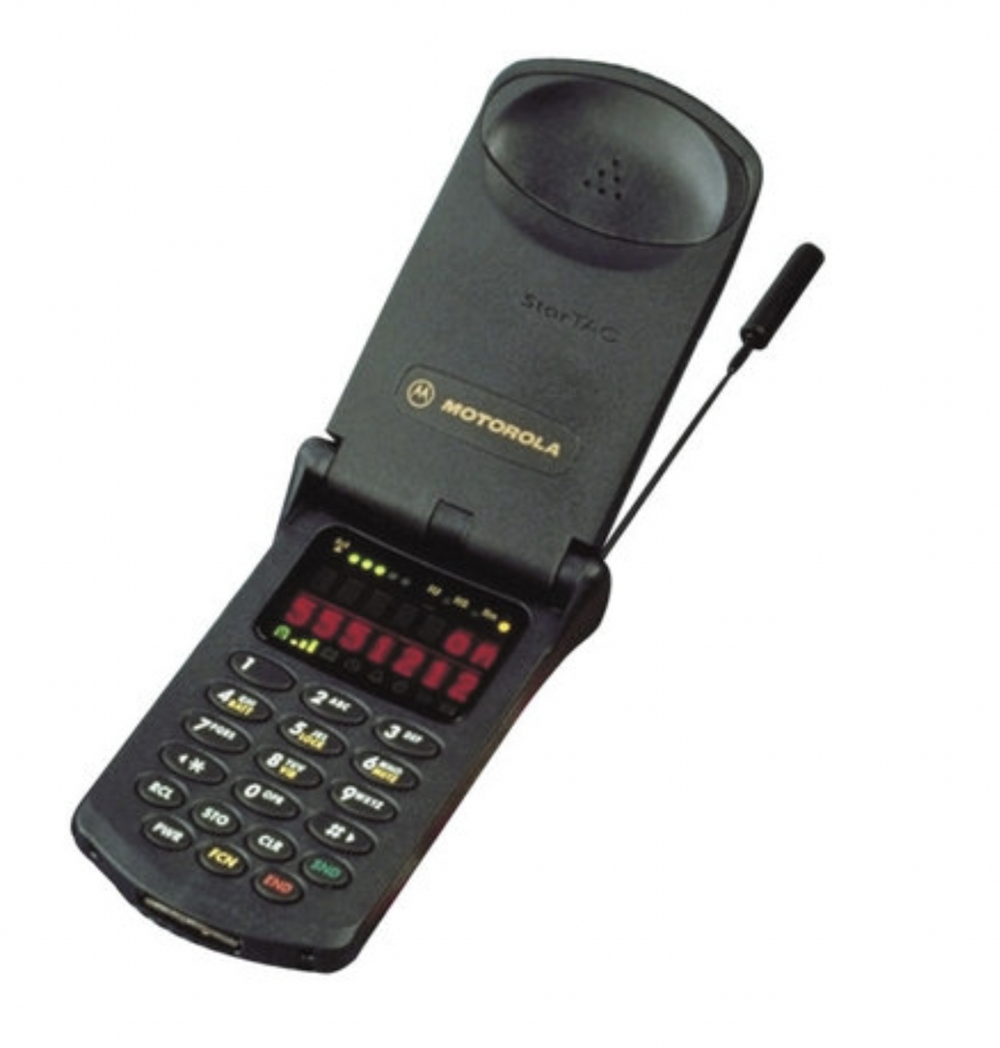
Motorola StarTAC
The first flip phone. It had a 2-line screen with a bluish backlight, 11 ringtones and a vibration alert function. Its creators took inspiration from the TV series Star Trek.
Nokia 8110 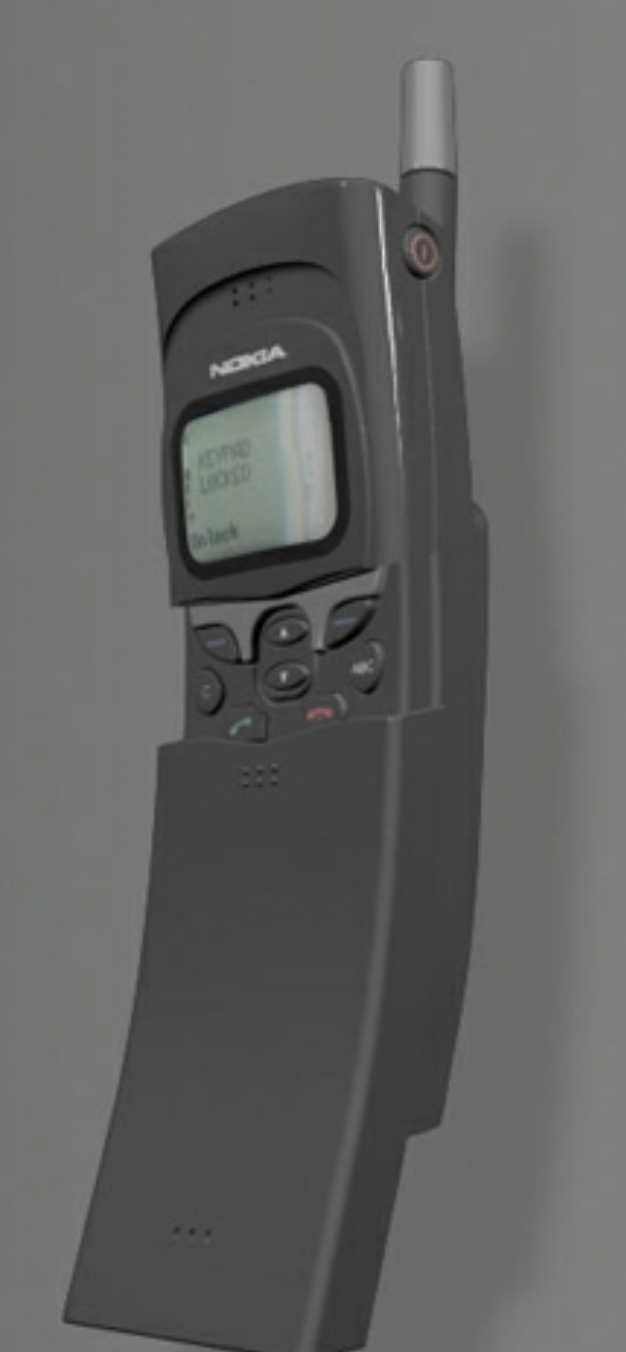
Nokia 8110
Due to its curved body, this model received the nickname “banana”. It is this phone that Morpheus calls Neo in the cult blockbuster “The Matrix”. In the film, the lid of the device is released using a button; in real life, this had to be done manually. The mobile battery lasted about 2 days.
Nokia 9000 Communicator 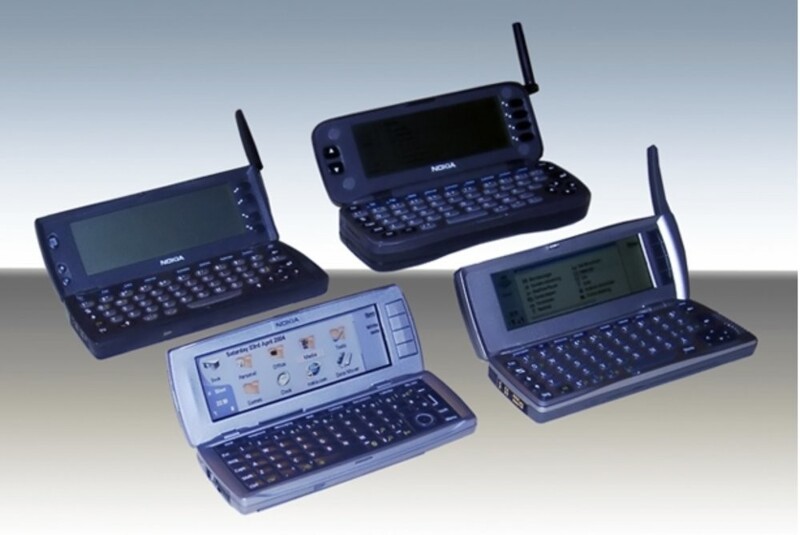
Nokia 9000 Communicator
The design of this device resembles a mini-laptop with a full QWERTY keyboard. It combined a PDA with a web browser and a regular cell phone. The memory in it was divided into built-in and operational. In the second case, EDO DRAM was used. Processor - Intel 386. Operating system - GEOS. The screen is monochrome with 4 shades of gray.
1998 Nokia 9110i 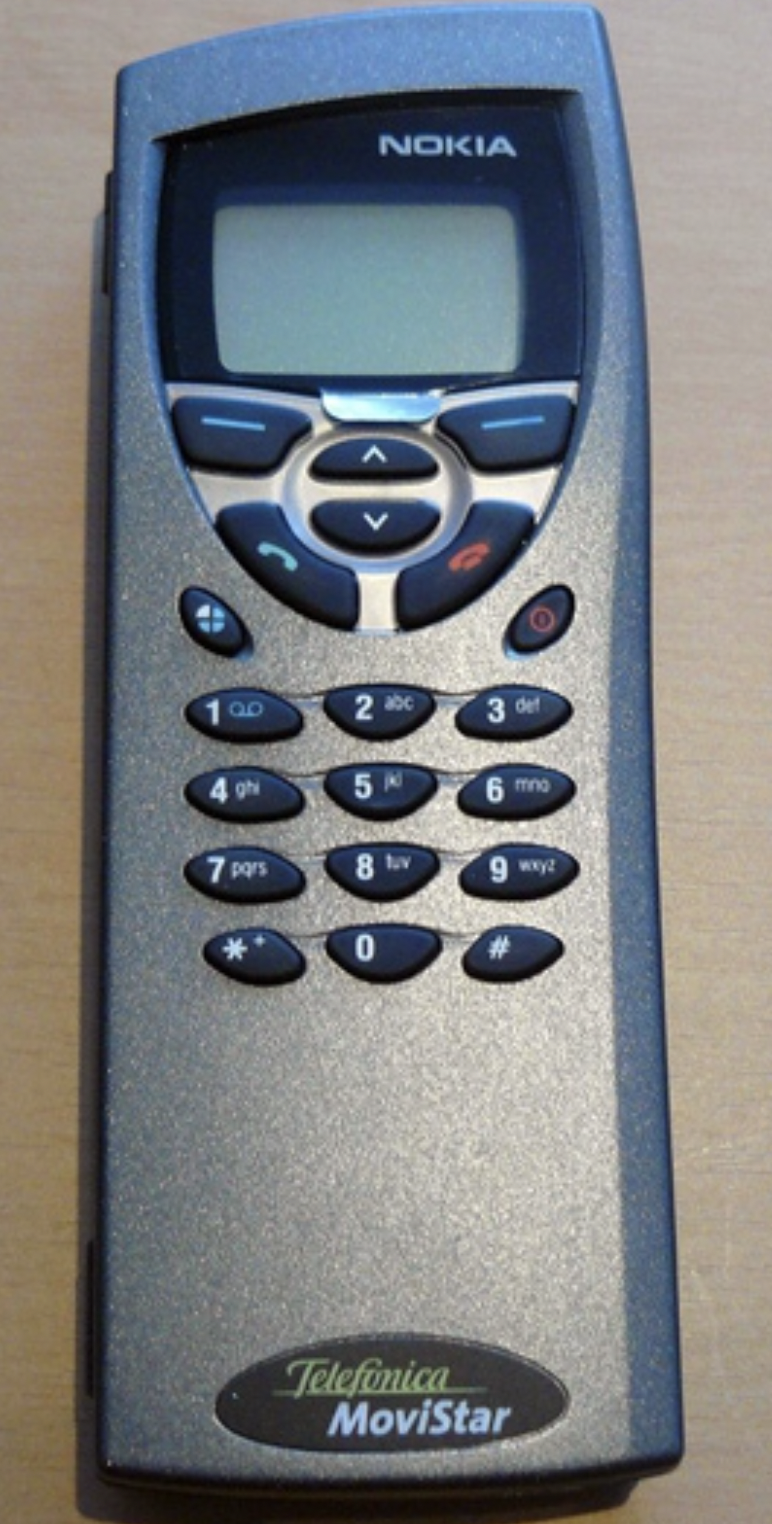
Nokia 9110i
Lightweight communicator model. There was a slot for a memory card and a fax function. The number of shades of gray on the screen is 8.
Nokia 5110 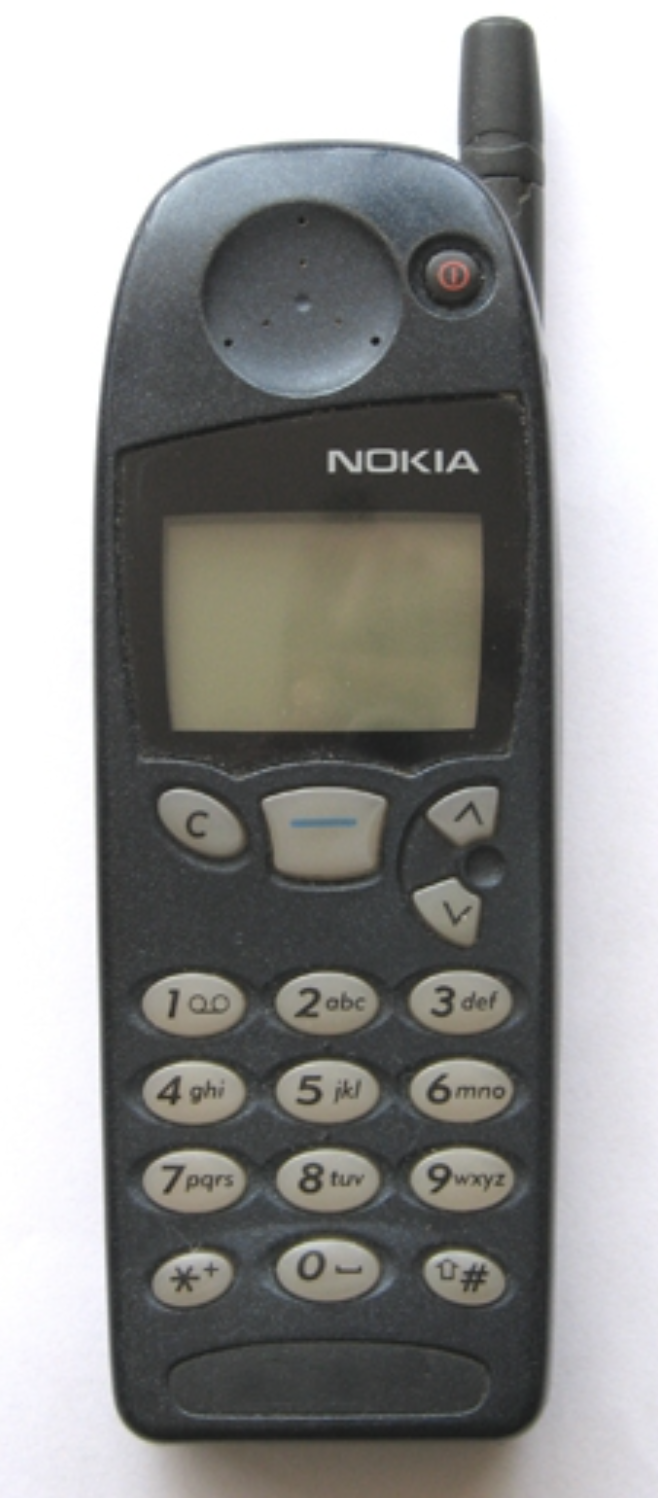
Nokia 5110
This is one of the first mobile phones that gave impetus to the development of cellular communications. Its main functions are making calls and sending SMS. The graphic display could contain up to 5 text lines. It also included an alarm clock, calculator, volume levels and 30 ringtones.
1999 Nokia 8210 
Nokia 8210
Compared to the options described above, this mobile phone was super thin and super light - its dimensions were only 101.5 × 44.5 × 17.4 mm, and its weight was 79 g. It also had an IR port. The main disadvantage of the model is the dim screen.
Nokia 7110 
Nokia 7110
Dual-band device with a slider and control wheel on the body. The first Nokia cell phone to support WAP protocol. The phone book allowed you to record up to 1000 numbers.
Nokia 5210 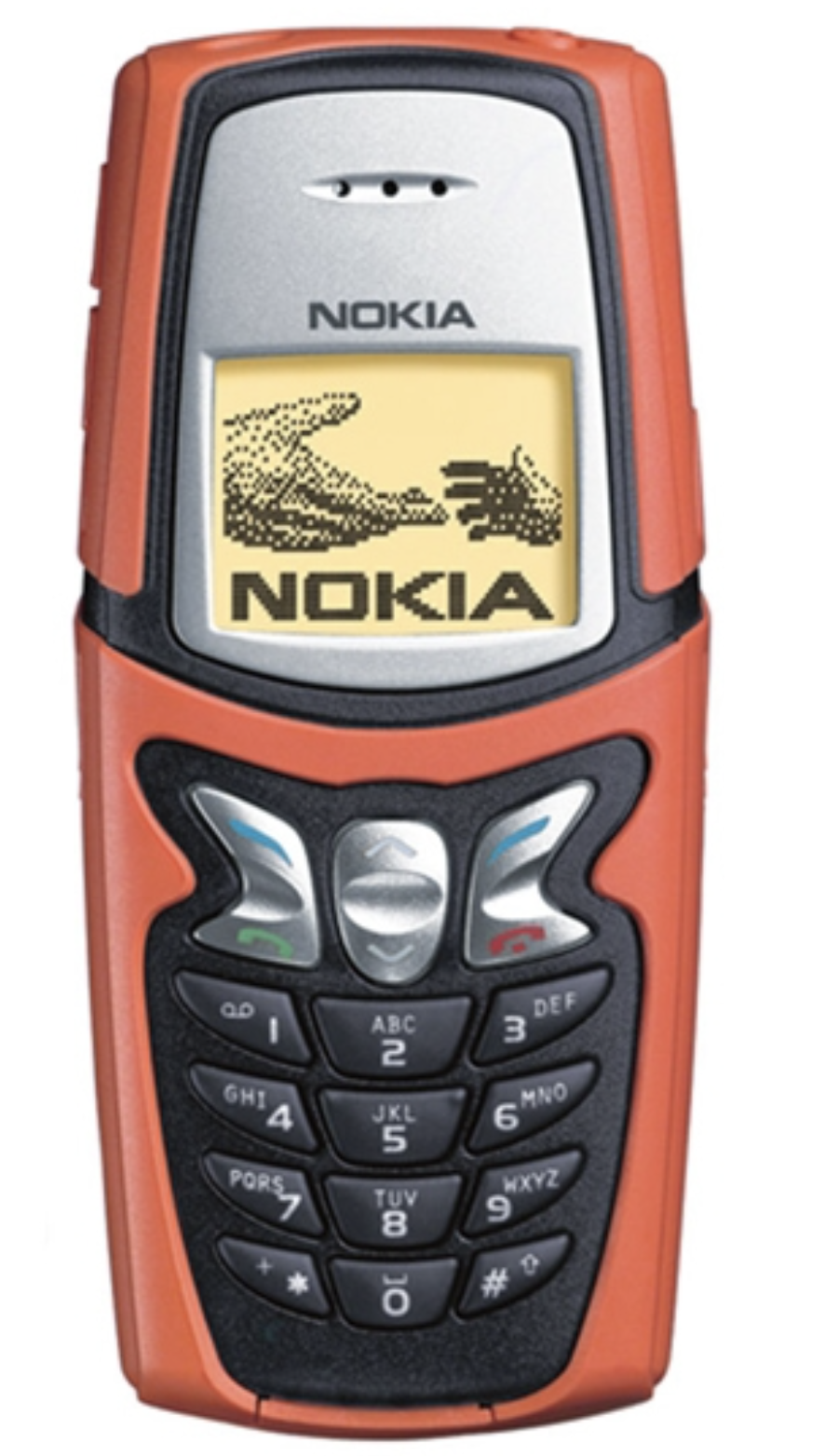
Nokia 5210
This model was positioned as a sports model. It had a removable waterproof and shock-resistant case. The display used a light orange backlight for the first time.
Benefon Esc! 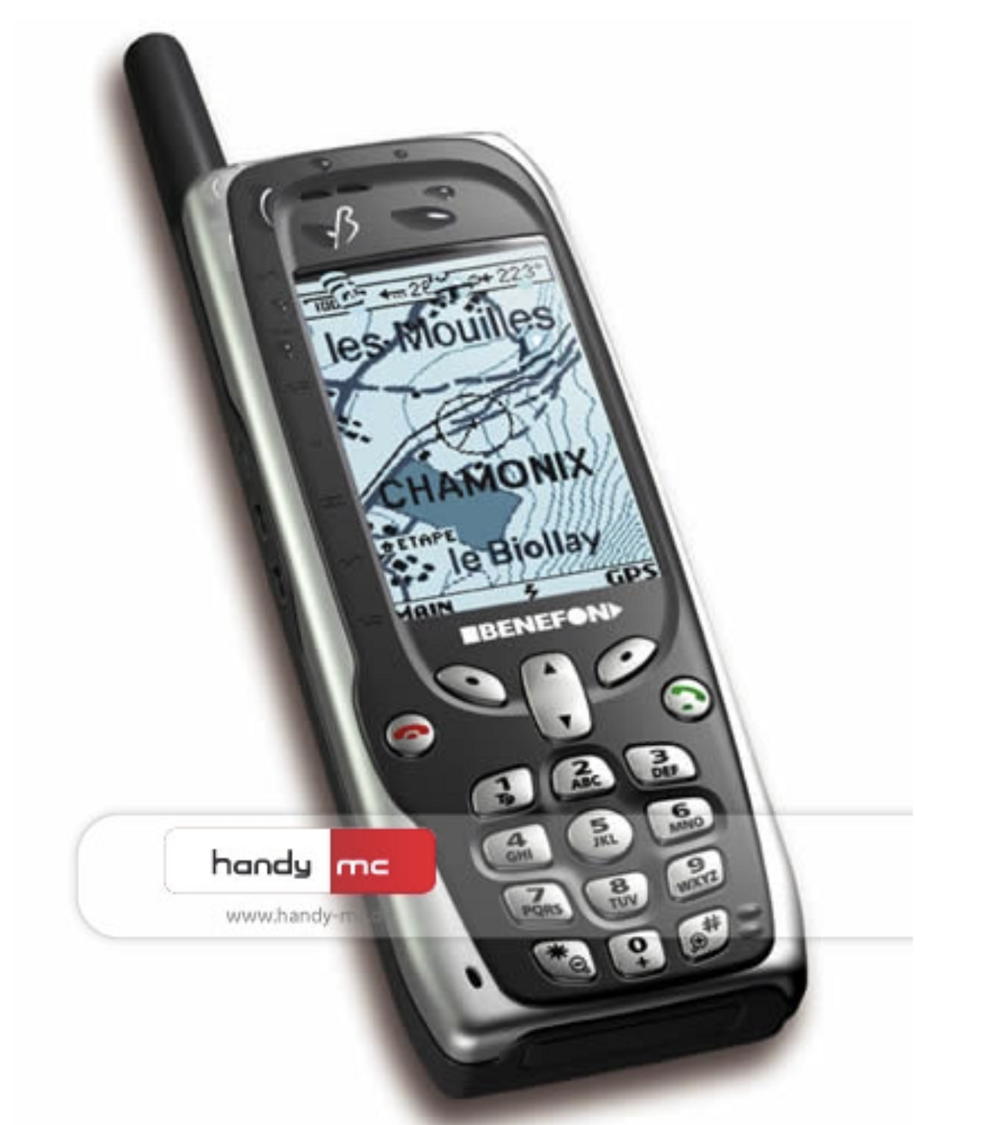
Benefon Esc!
The first phone equipped with built-in GPS. It gained particular popularity in European countries. It had an increased screen size that could accommodate up to 20 lines of text.
Nokia 3210 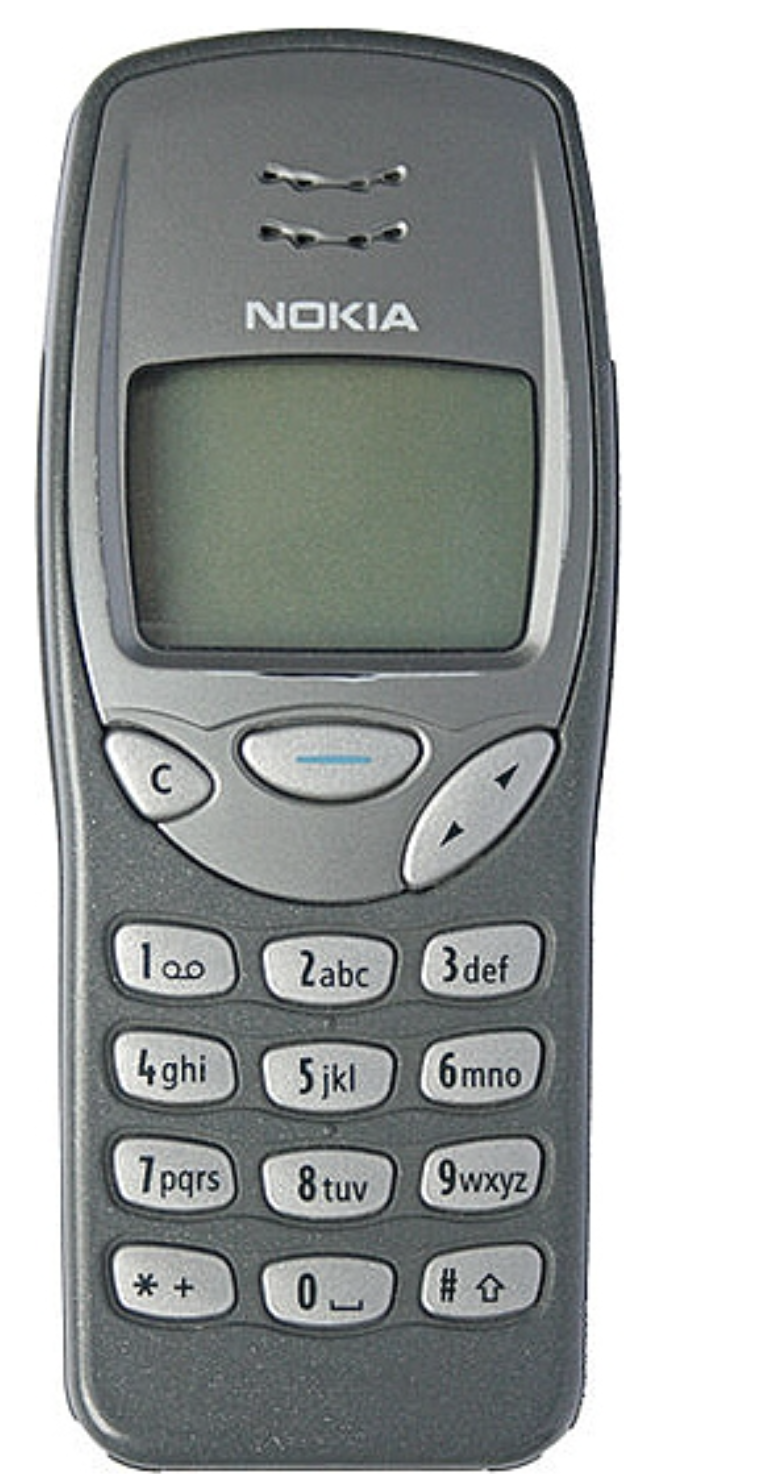
Nokia 3210
It is considered one of the highest grossing retro phones - its sales amounted to 160 million copies. He owes this success to the internal antenna, the T9 system and the relatively affordable cost. Nokia 3210 was extremely popular among young people.
year 2000. Ericsson R380 
Ericsson R380
The first of the old mobile phones to be officially called a “smartphone”. It combined a cellular and a pocket computer. It had a folding panel that allows you to quickly increase the screen area. Thanks to the built-in speakerphone, the user could talk on his cell phone while working with the PDA.
Nokia 3310 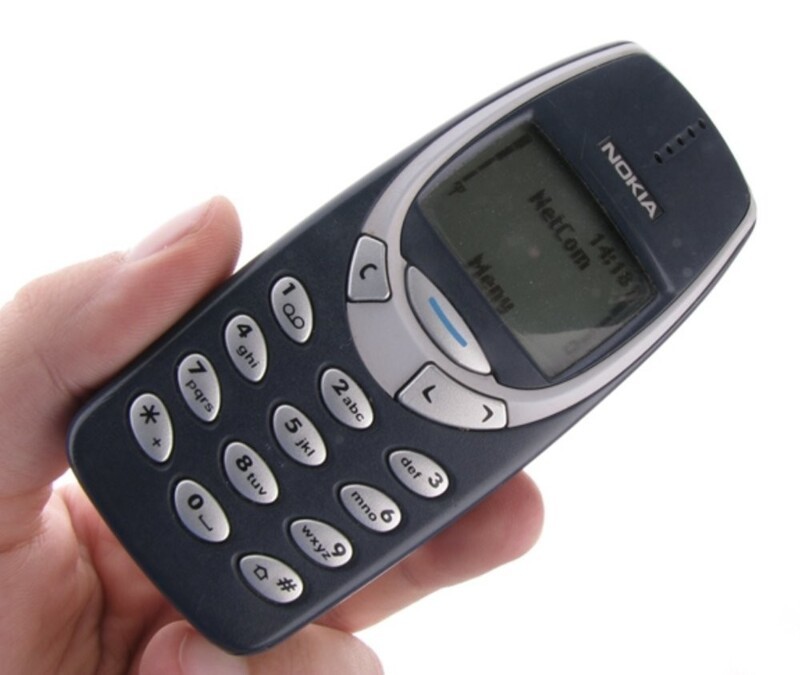
Nokia 3310
This legendary phone has received immortal status. It was tested for strength in many ways - thrown from a height, used as a hammer, thrown against a wall, etc. Nokia 3310 sold approximately 126 million units.
year 2001. Nokia 5510 
Nokia 5510
The first Nokia mobile phone to have horizontal elements. There was a display in the center, and a QWERTY keyboard on the sides. Up to 3 lines of text were displayed on the screen. The memory could hold up to 64 MB of music.
Nokia 8310 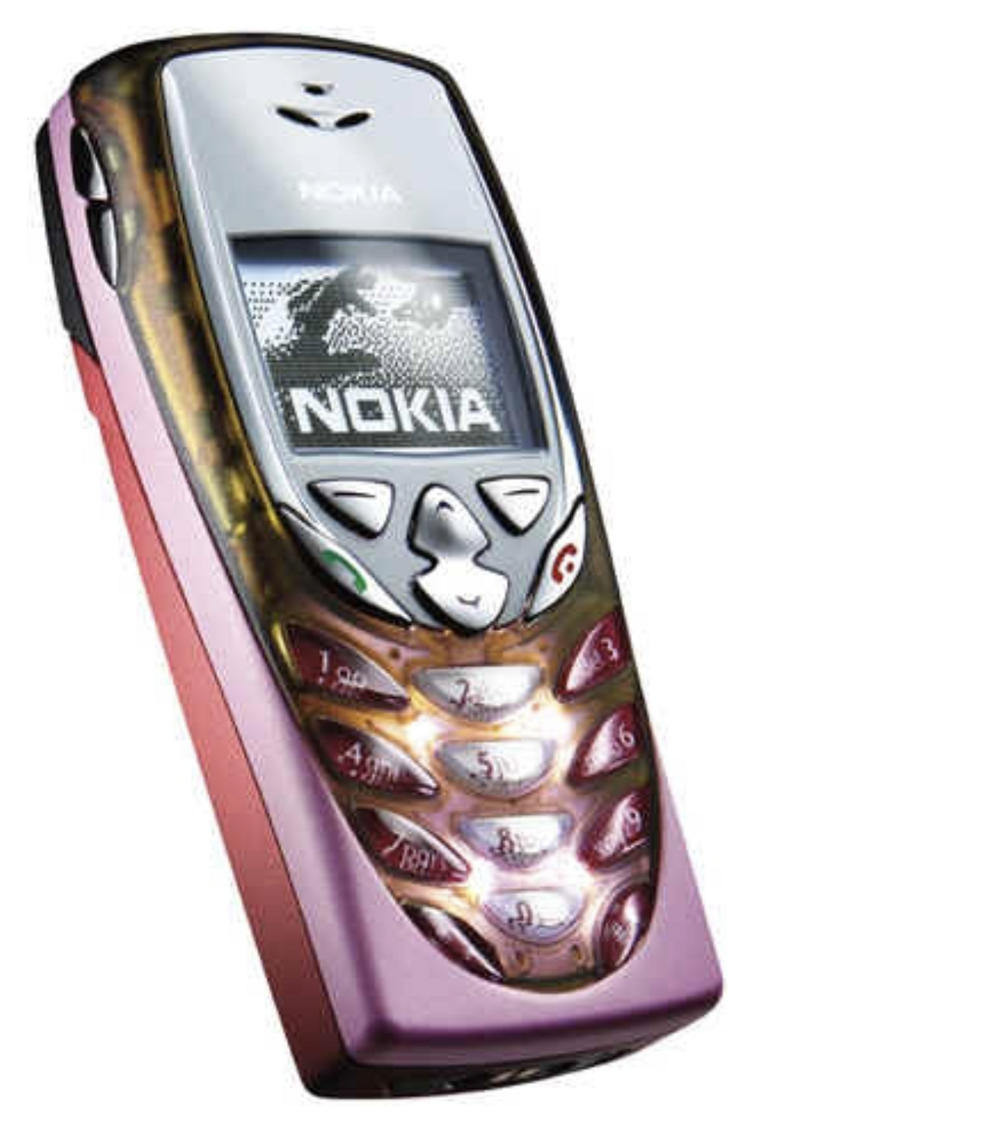
Nokia 8310
Premium model. It had a high-contrast graphic display that could fit up to 5 lines of text. It also had the ability to connect to a PC via infrared and built-in FM radio.
Ericsson T39 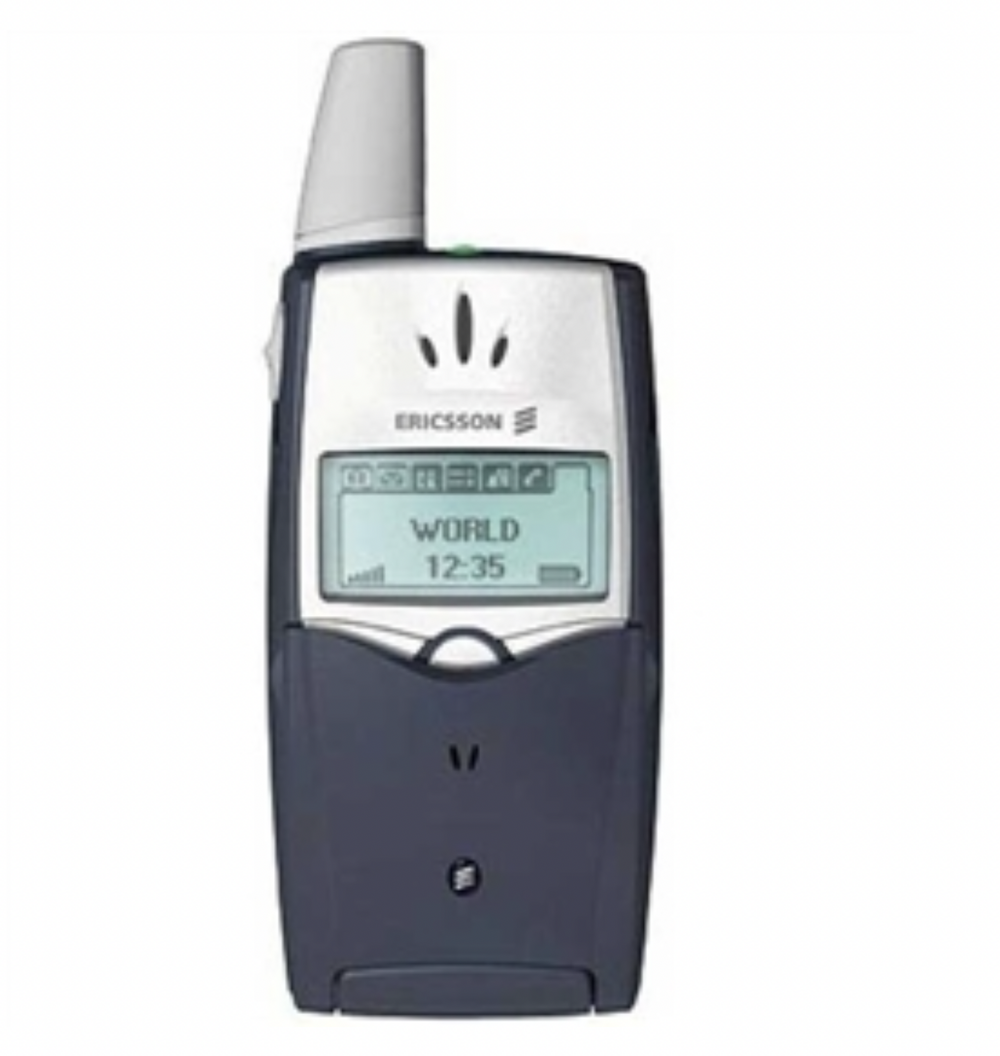
Ericsson T39
Tri-band phone with GPRS support. The first mobile with Bluetooth technology. It had an external antenna, which could be removed if necessary, and a powerful built-in modem.
Ericsson T66 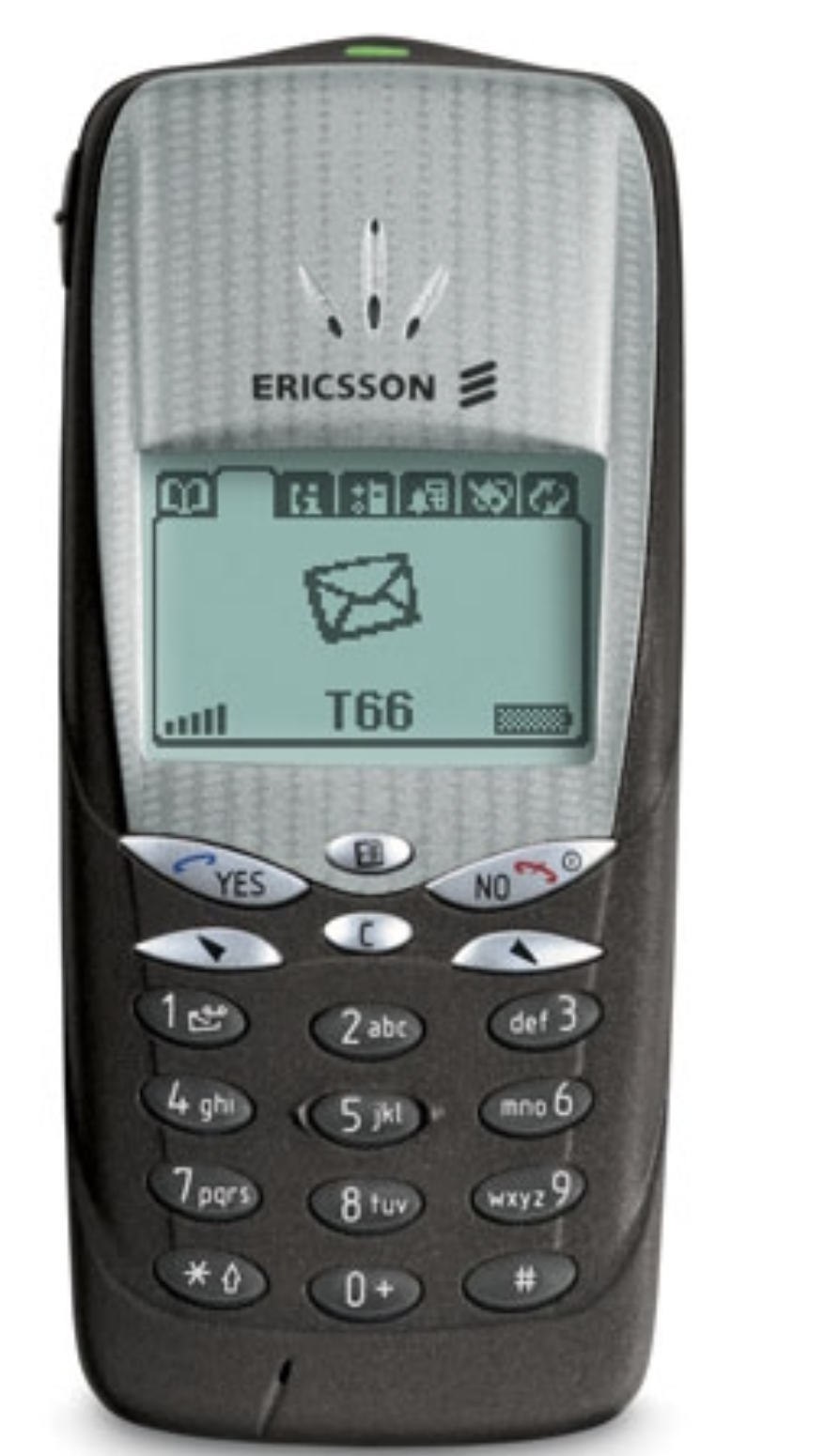
Ericsson T66
The miniature device is slightly larger than a lighter in length and weighs 59 g. Despite its small dimensions, it had many useful functions, including a ringtone and picture editor. The battery capacity was enough for about 2-3 hours of continuous use.
Ericsson T68 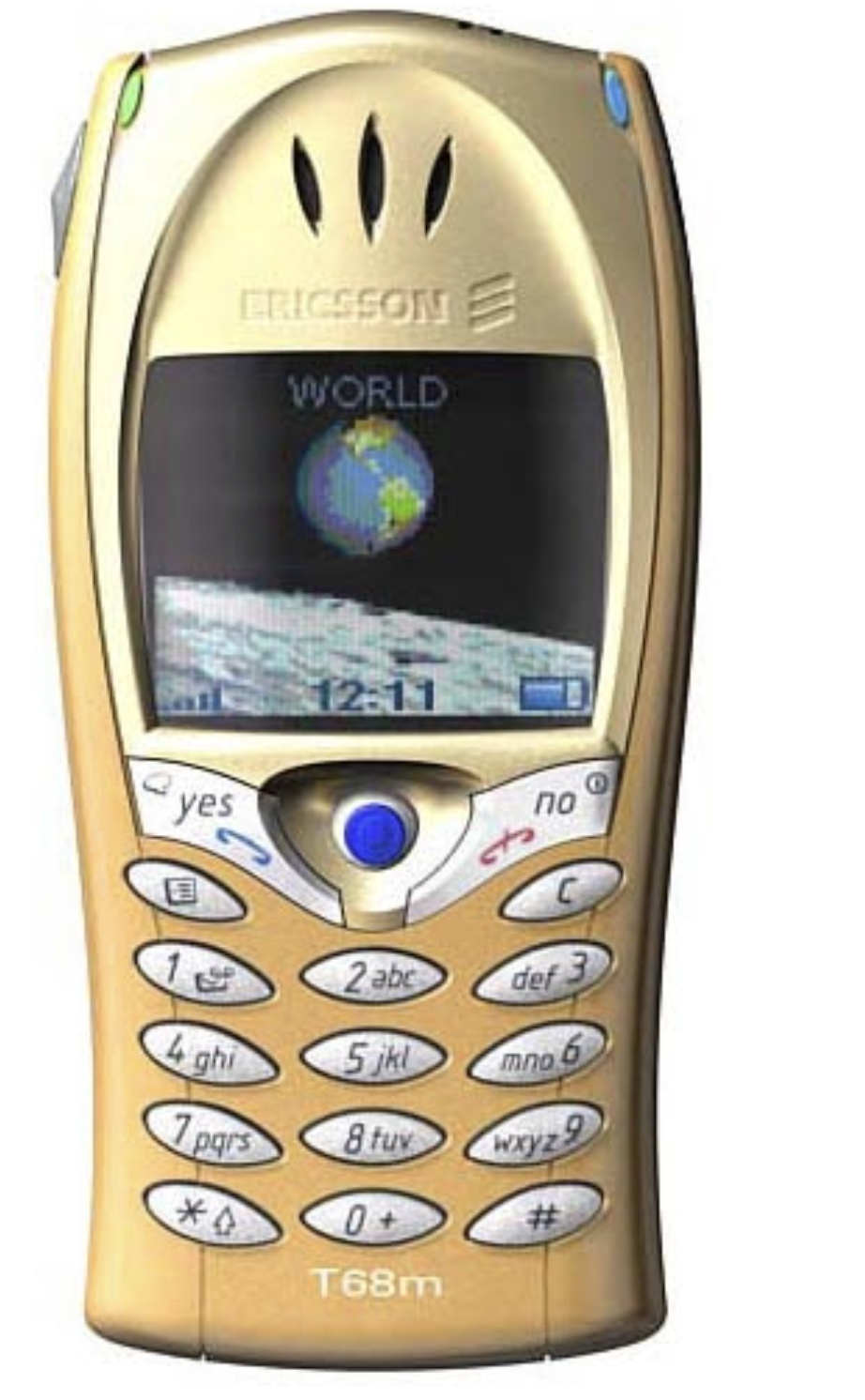
Ericsson T68
The first cellular phone from Ericsson with a color display displaying up to 256 colors and shades. The screen could fit up to 8 text lines. To simplify the management of the phone, the developers have equipped it with a convenient joystick.
Siemens S45 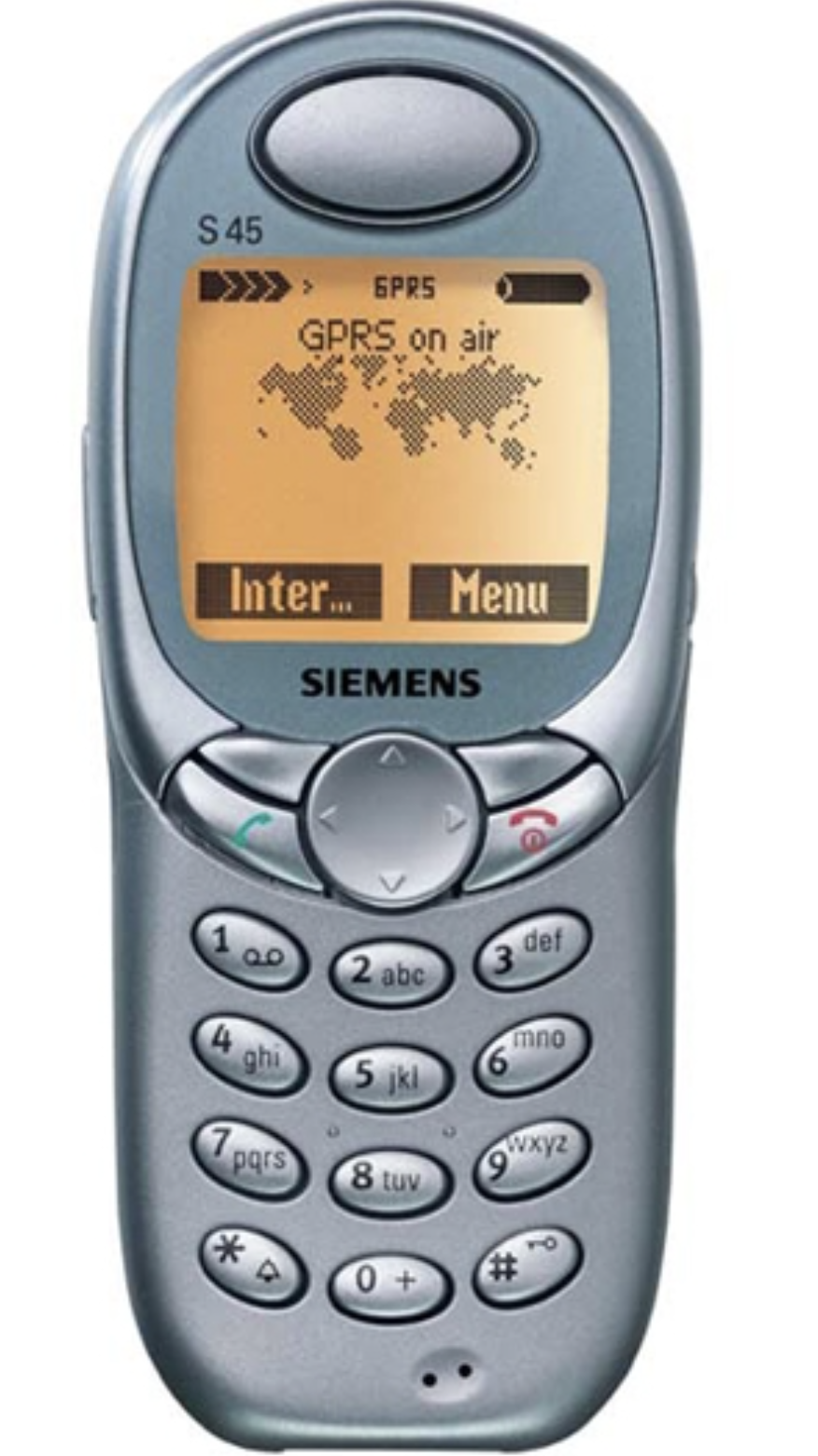
Siemens S45
The first mobile from Siemens to support GPRS. The battery capacity is designed for 6 hours of communication and 300 hours of standby time. Among other features made possible by the development of technology is the possibility of voice control.
2002 Nokia 3510(i) 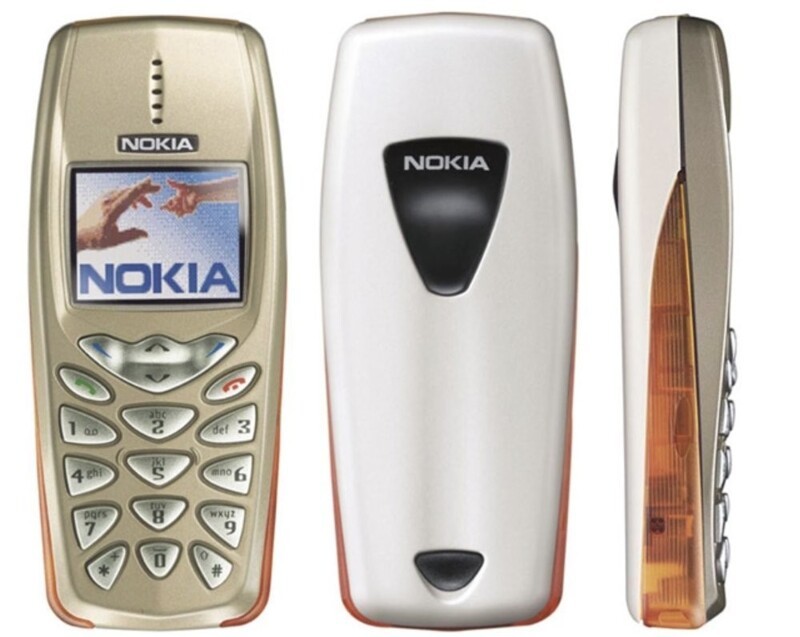
Nokia 3510(i)
The first mobile from Nokia with a color display. Was capable of displaying up to 4096 colors. It is also the first budget device to feature an e-wallet.
Nokia 7650 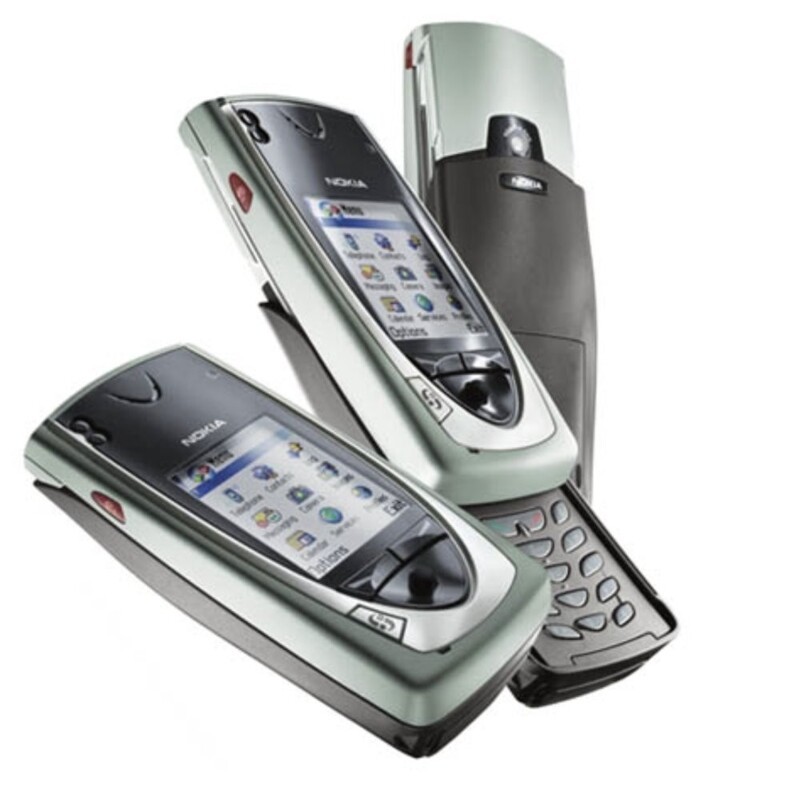
Nokia 7650
This mobile communicator from Nokia features a built-in camera for the first time. You can store up to 80 photos in memory. The menu is designed for 28 languages. The phone is also equipped with Bluetooth and an infrared port. You can see him in the film “Minority Report”.
Sony Ericsson P800 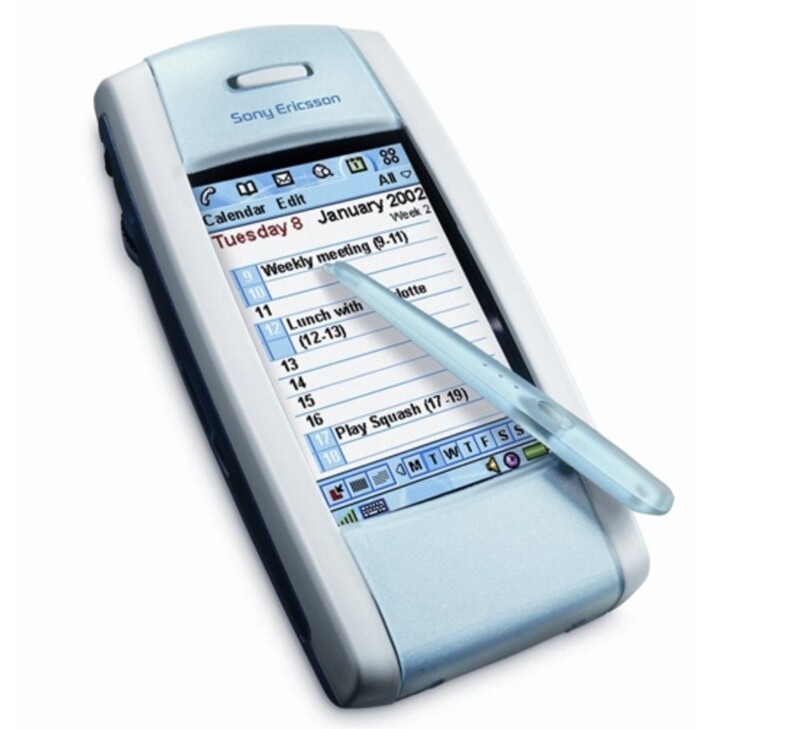
Sony Ericsson P800
A multifunctional device that combines a digital camera, video player, MP3 player. It has a touch screen designed to work with a stylus. Allows you to play 3D games. Memory capacity - up to 128 MB.
Nokia 6100 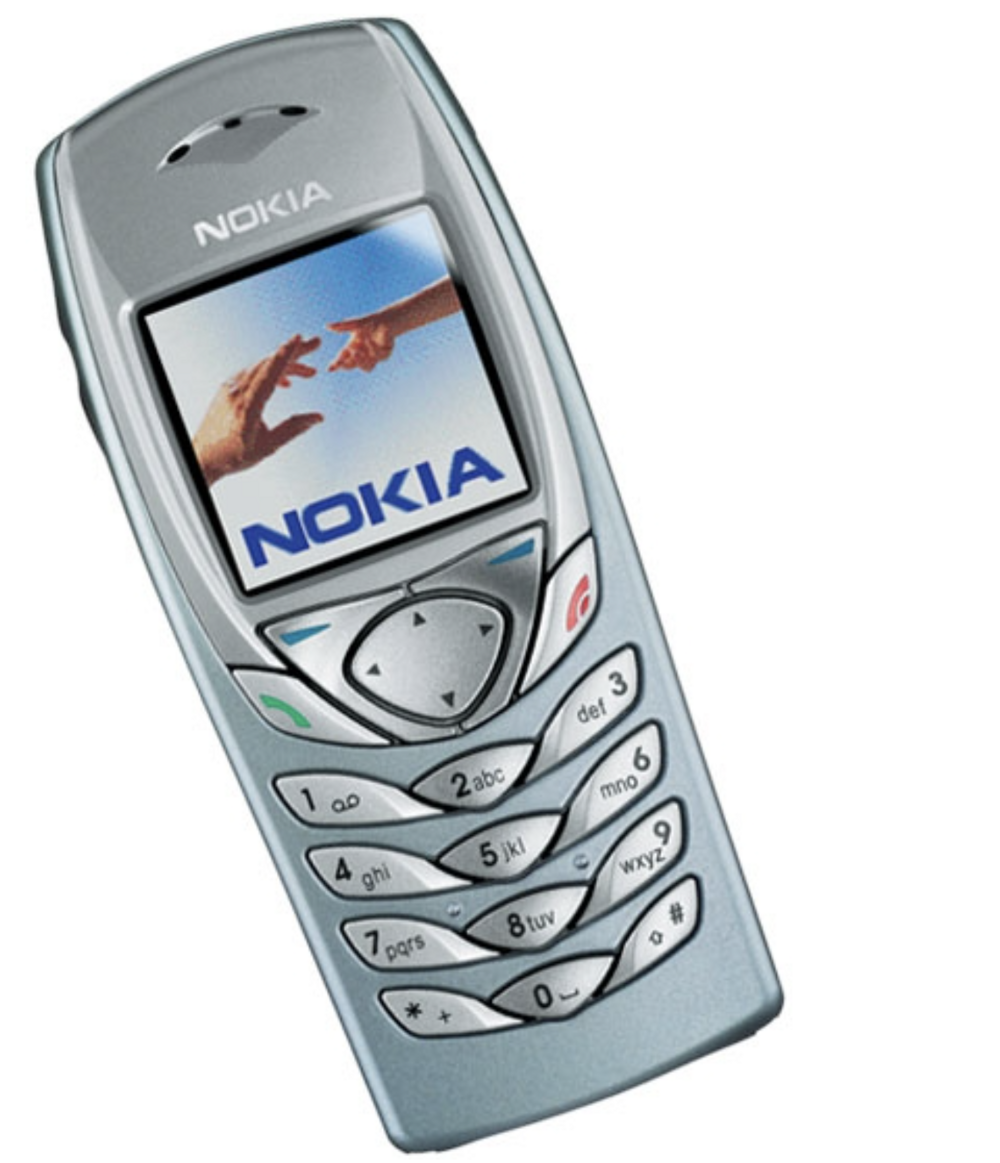
Nokia 6100
Compact, weightless phone. Weight including battery is only 76 g. The screen supports 4096 colors. It is possible to change external panels.
Nokia 6310i 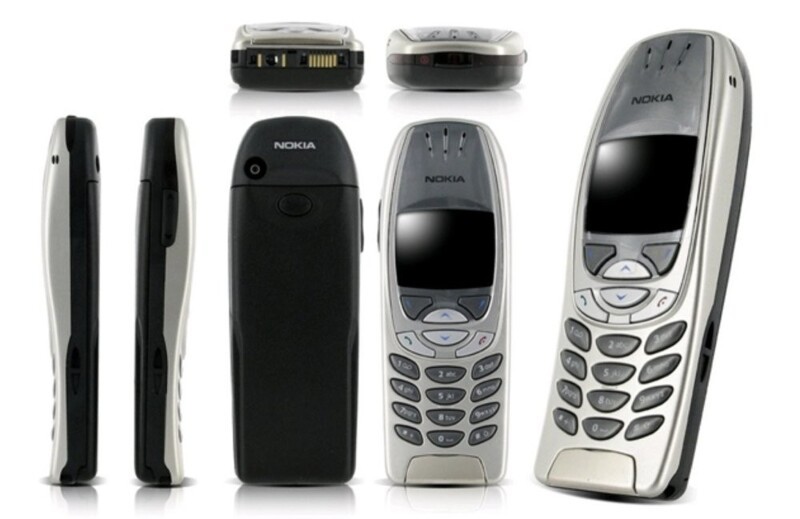
Nokia 6310i
Business model with additional GSM-1900 band. Syncs with PC. The screen is monochrome. Operating time when talking - 6 hours, in inactive mode - 400 hours.
Sanyo SCP-5300 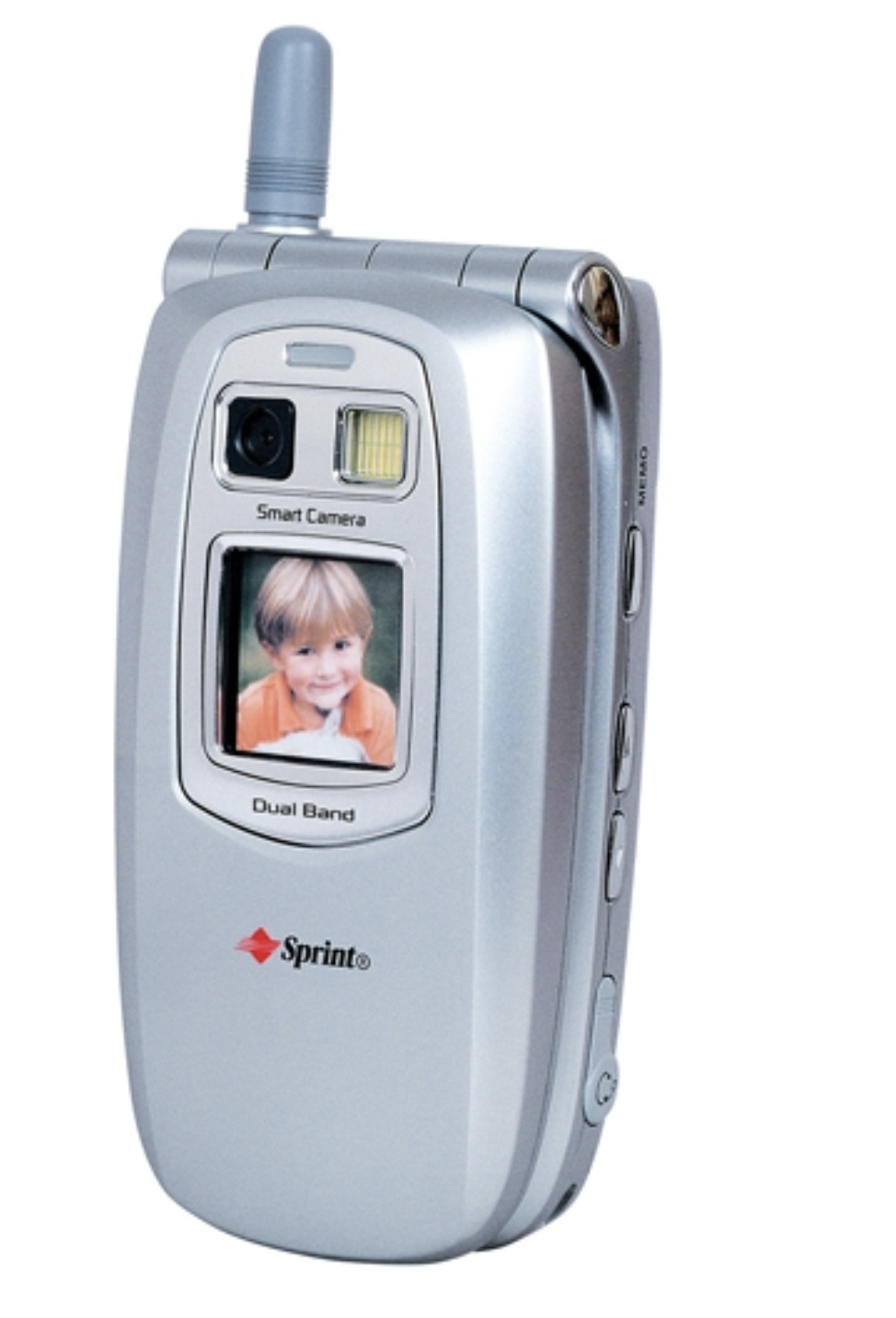
Sanyo SCP-5300
One of the first phones with a camera. It has two color screens - external and internal. The camera is equipped with ZOOM and is capable of enlarging the image 16 times. The TFT display conveys a rich color palette. Communication standard - CDMA-800. The maximum number of lines of text is 10.
2003 Nokia 1100 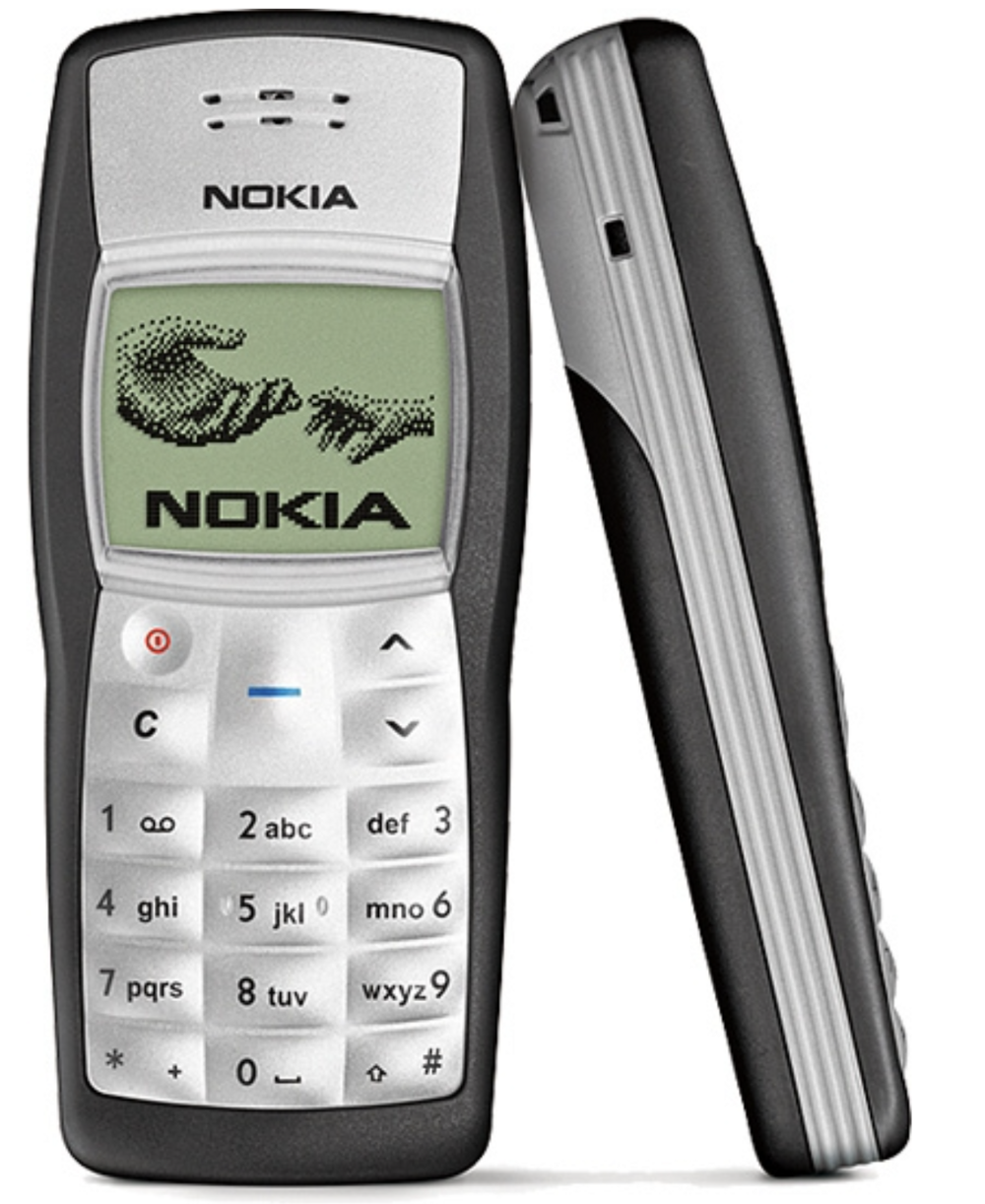
Nokia 1100
A simplified dual-band model codenamed “Penny”. It only worked when the SIM card was inserted. It had a flashlight. The screen is monochrome. A separate batch of devices manufactured in the German city of Bochum had software defects and made it possible to intercept bank transaction codes. In a criminal environment, the cost of such phones reached $32 thousand.
Nokia N-Gage 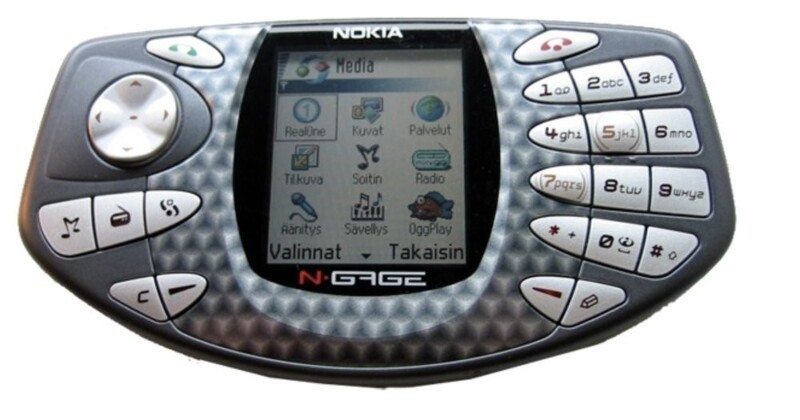
Nokia N-Gage
This phone was a response to the Game Boy Advance portable gaming system. According to the creators, it was supposed to become a full-fledged gaming console. However, due to the unsuccessful interface, N-Gage was not widely accepted.
PalmOne Treo 600 
PalmOne Treo 600
The GSM communicator from Handspring had a very compact size. It allowed you to work with built-in applications without using a stylus. He had a camera, Internet access, and the ability to work with documents. Operating system - Palm OS 5.2.1H.
Nokia 2100 
Nokia 2100
A budget device with a wide variety of colors. The display is monochrome. There is a calculator, alarm clock, and organizer. There is no camera.
Nokia 6600 
Nokia 6600
The popular name is “penguin”. This phone demonstrated a sharp leap in the evolution of mobile phones - its screen already displayed more than 65,000 colors! The camera made it possible to take very high-quality photographs and videos for those times. The user also had a good zoom lens at his disposal.
BlackBerry Quark 6210 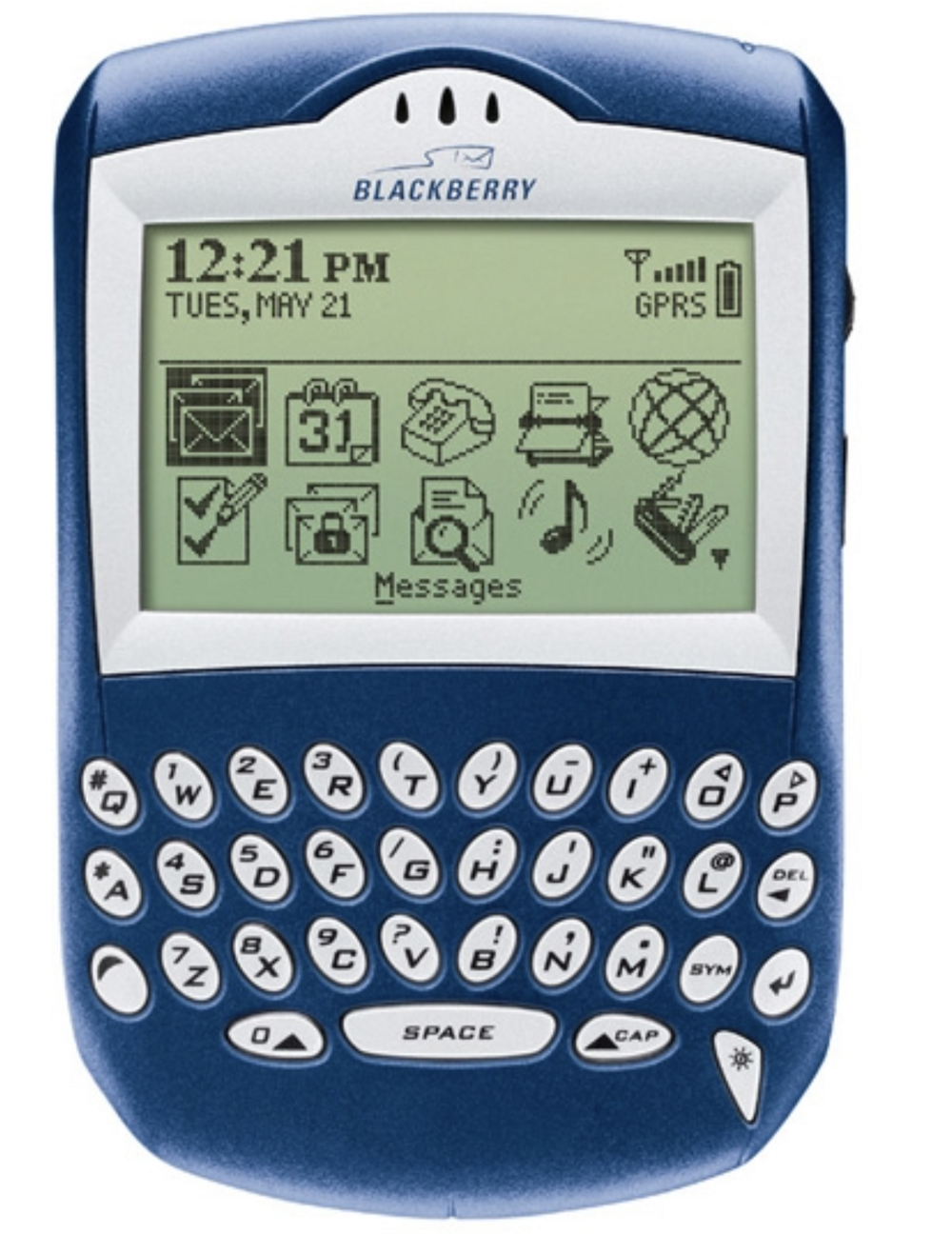
BlackBerry Quark 6210
The first business device that combined a cell phone, email, SMS, web browser and various applications. RAM - 2 MB, flash memory - 16 MB. Time magazine named the BlackBerry Quark 6210 one of the most significant gadgets in the history of mobile phones.
Nokia 7600 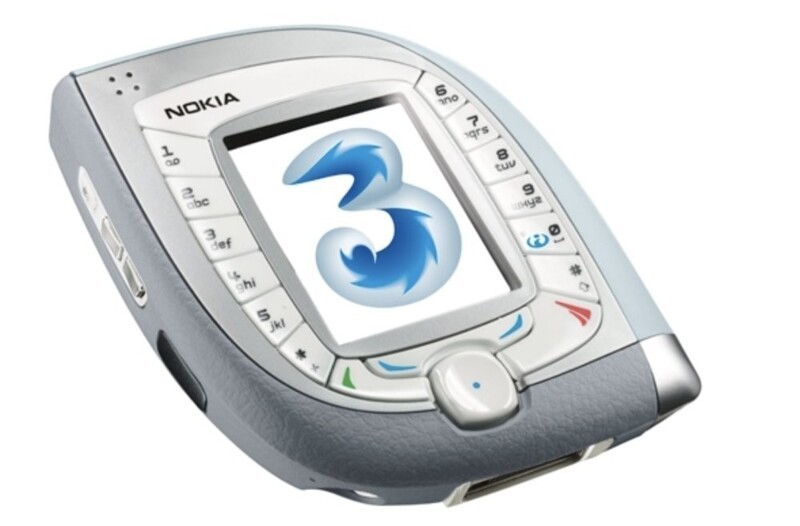
Nokia 7600
One of the first push-button phones with 3G support. It had an unusual diamond shape. On both sides of the screen there was a keyboard in the form of columns. The TFT display had increased reflectivity, which improved readability even in bright light.
2004 Motorola Razr V3 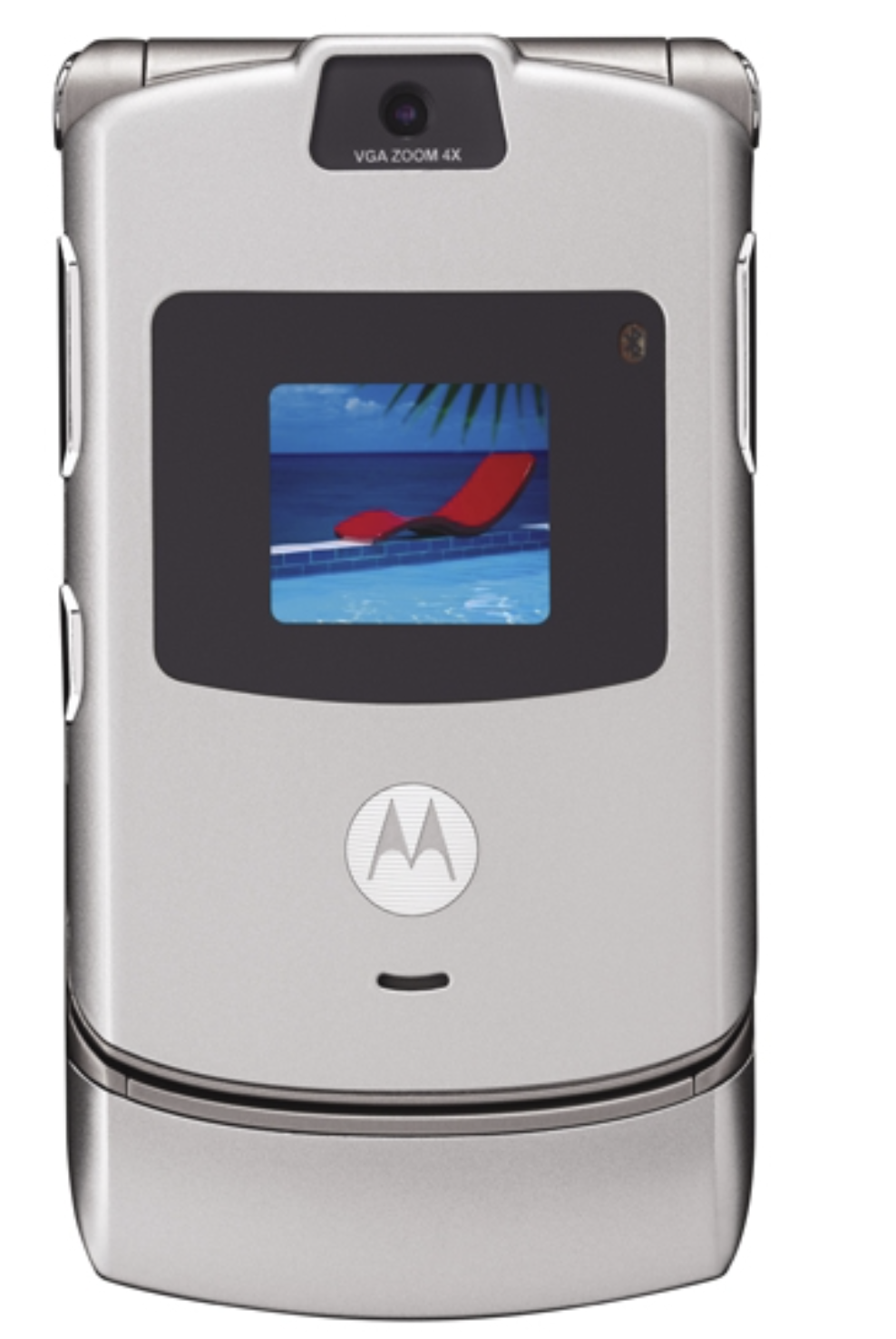
Motorola Razor V3
For a Razr flip phone (from the English “razor” - “razor”), the V3 had an ultra-thin body for that time. The metal keyboard was equipped with electroluminescent backlighting. The internal screen transmitted up to 262,000 shades of the color palette. The device had a mini-USB port. The shiny metal finish gave it a special respectability.
Sony Ericsson P910 
Sony Ericsson P910
Known under the code name “Layla”. A characteristic feature is a folding flip case with a QWERTY keyboard. Built-in memory - 64 MB; The maximum external volume is 2 GB. There is support for Bluetooth, GPRS, WAP 2.0.
Nokia 7610 
Nokia 7610
The first smart phone from this company with a 1 megapixel camera. One of the first with RS-MMC memory card. The design is very similar to the Nokia 7600. The keyboard buttons have an unusual offset arrangement. There is support for EDGE technology.
Nokia 3220 
Nokia 3220
The first budget-class phone from Nokia with EDGE Internet. The model was aimed primarily at young people. The kit included pads for the bottom panel, making it possible to change the design of the cell phone. 12 bright LEDs made it possible to draw pictures in the air in the dark.
Nokia 7280 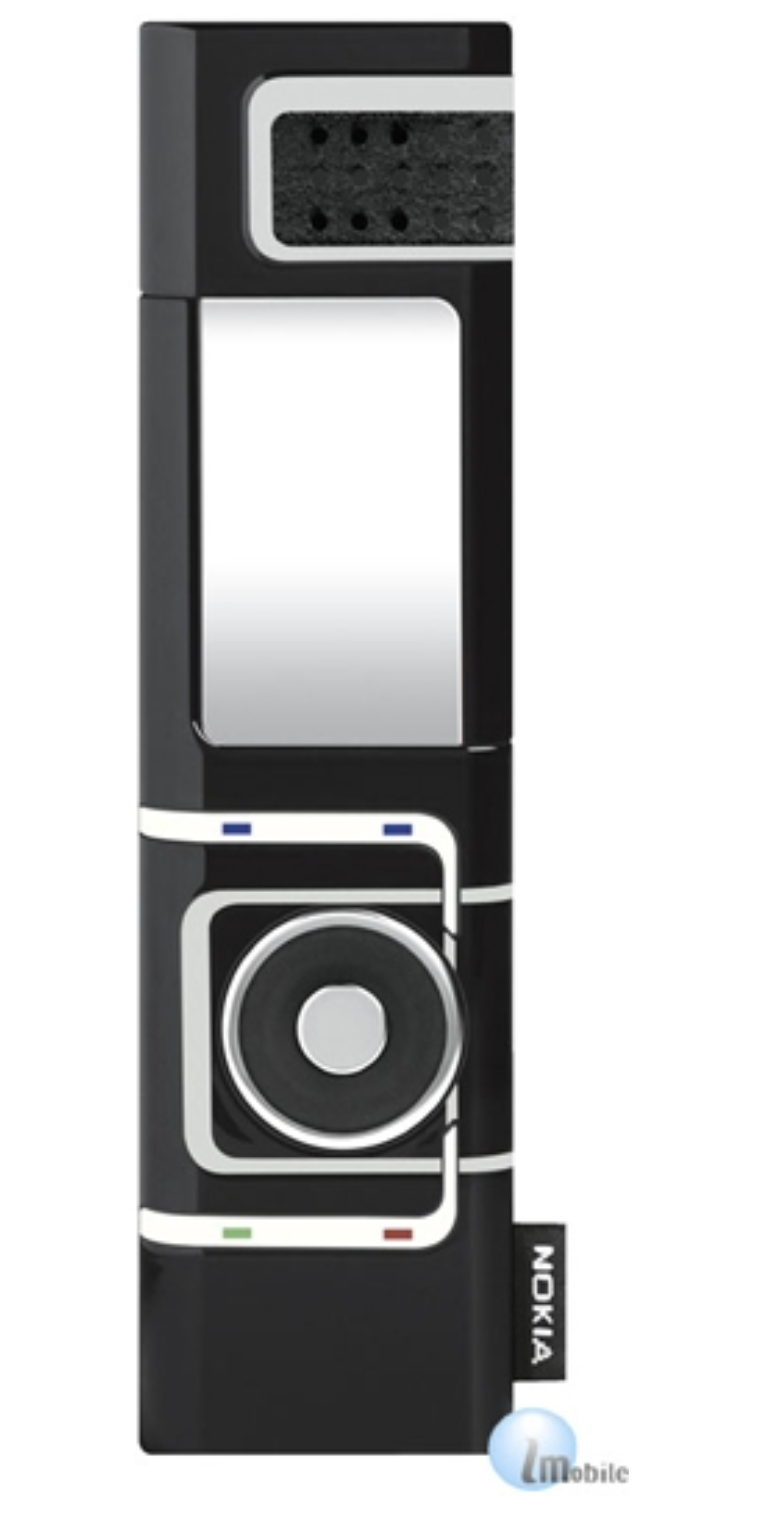
Nokia 7280
Due to its specific image form, it became known as a “lipstick phone”. The screen was quite small and had a horizontal orientation. The Fortune publication included the Nokia 7280 in the list of the best technology of 2004.
2005 year. Sony Ericsson K750 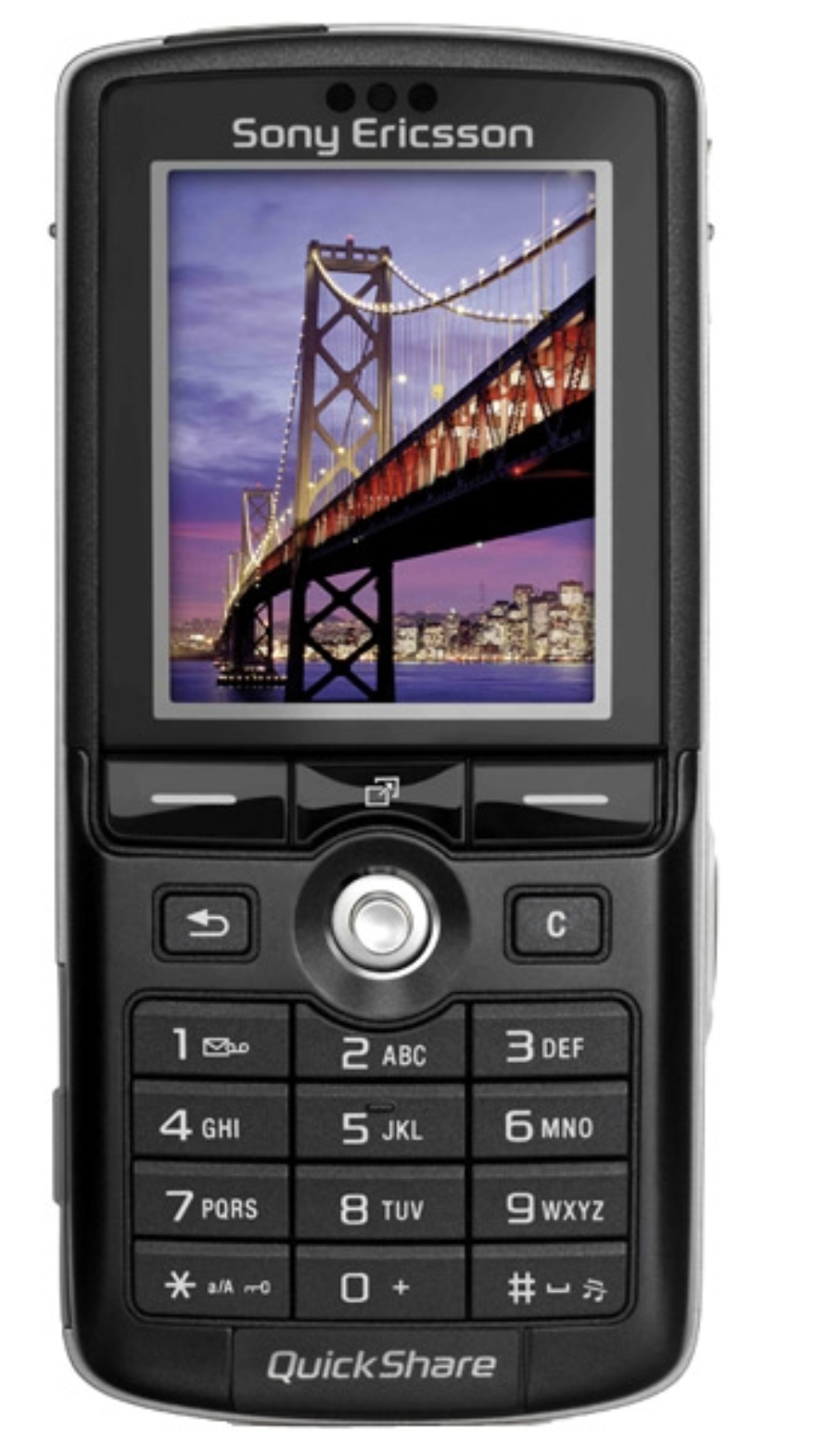
Sony Ericsson K750
One of the first models with a 2 megapixel camera. It was widespread. The phone could be used as a modem via Bluetooth, IrDA or USB. There was a slot for a solid state drive.
Nokia 1110 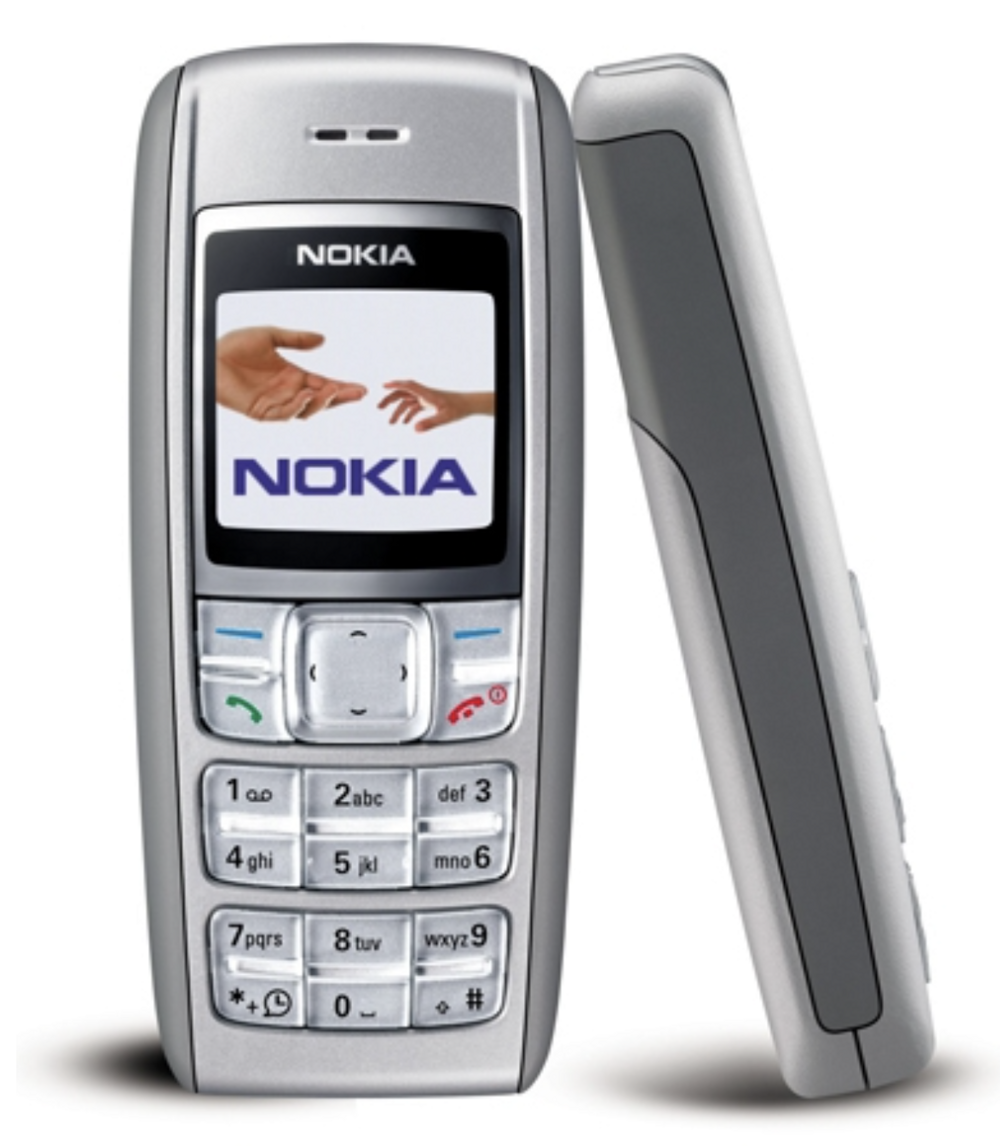
Nokia 1110
Nokia 1110 has become a low-budget mobile phone, very popular in underdeveloped countries. It has a monochrome display, a calculator, an alarm clock, and a notebook for 200 contacts. Internal memory capacity - 4 MB.
Nokia 6680 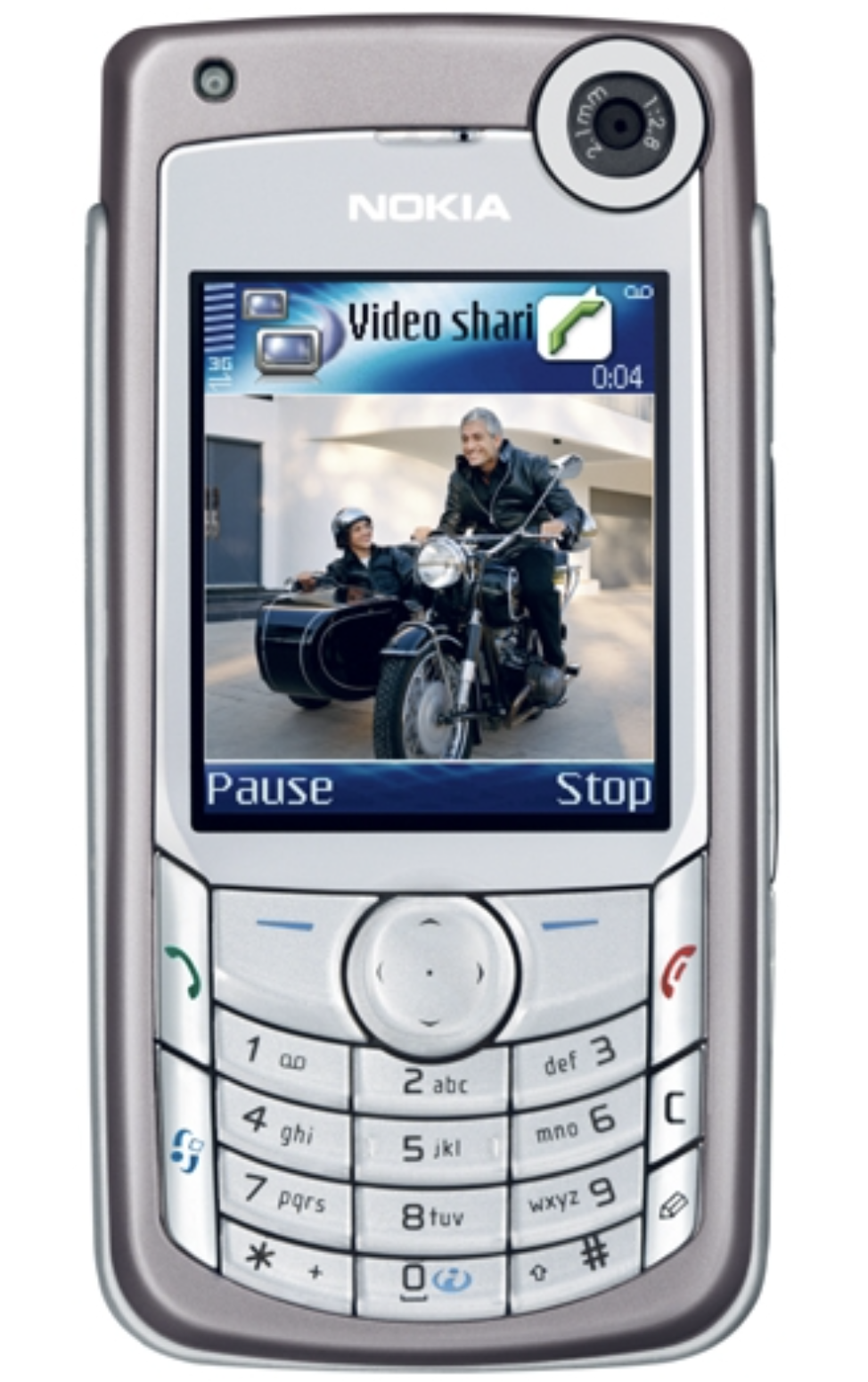
Nokia 6680
High-end device with 3G support. At the time of release it was very expensive. The first smartphone from Nokia with a front camera. Designed specifically for video calls.
HTC Universal 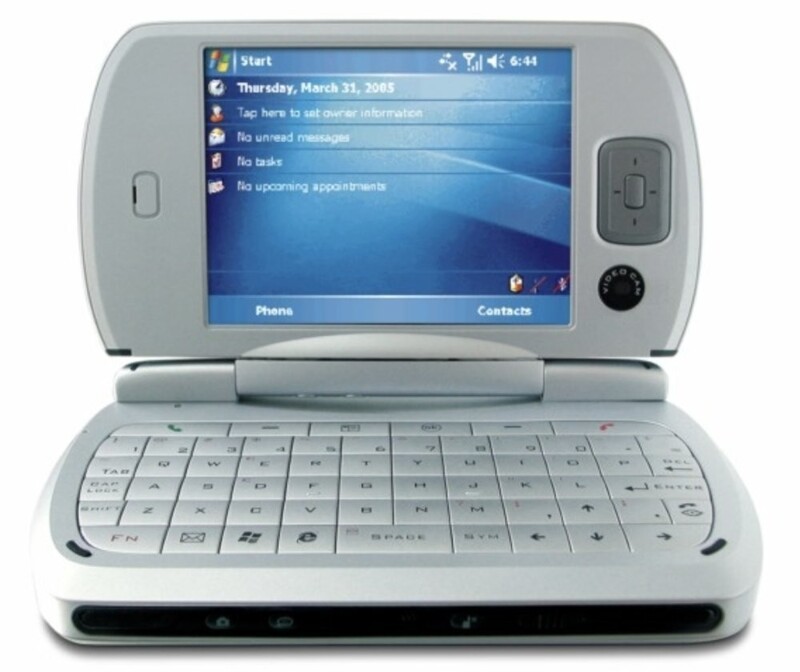
HTC Universal
The first communicator phone based on Windows Mobile. Supports 3G and Wi-Fi. It has a large VGA screen that can open and rotate, and two cameras.
Motorola RAZR V3 Magenta 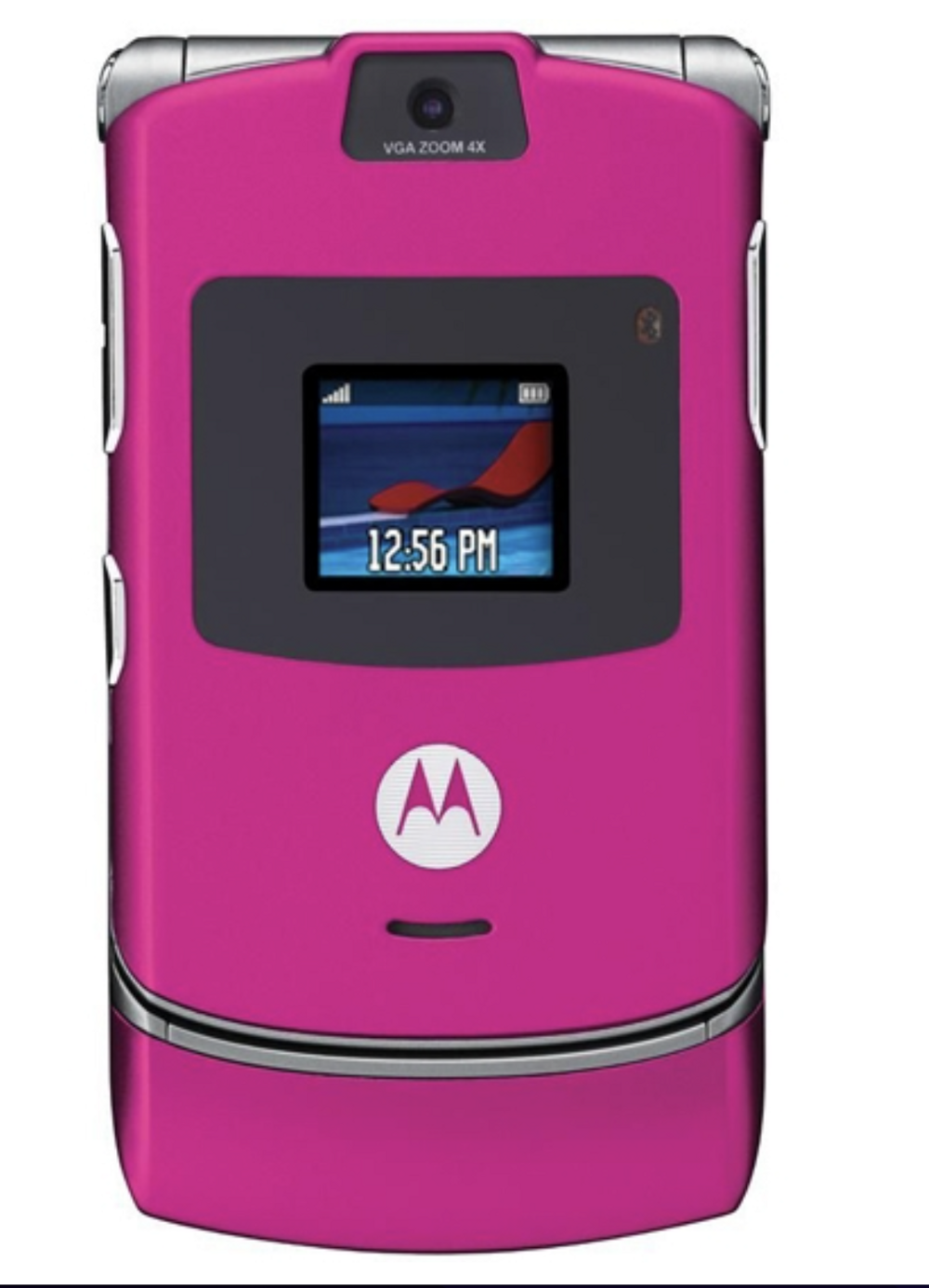
Motorola RAZR V3 Magenta
Glamorous hot pink accessory. Fashionistas of the 2000s adored him. The coloring was chosen in honor of the signature color of the T-Mobile brand.
2006 Nokia N73 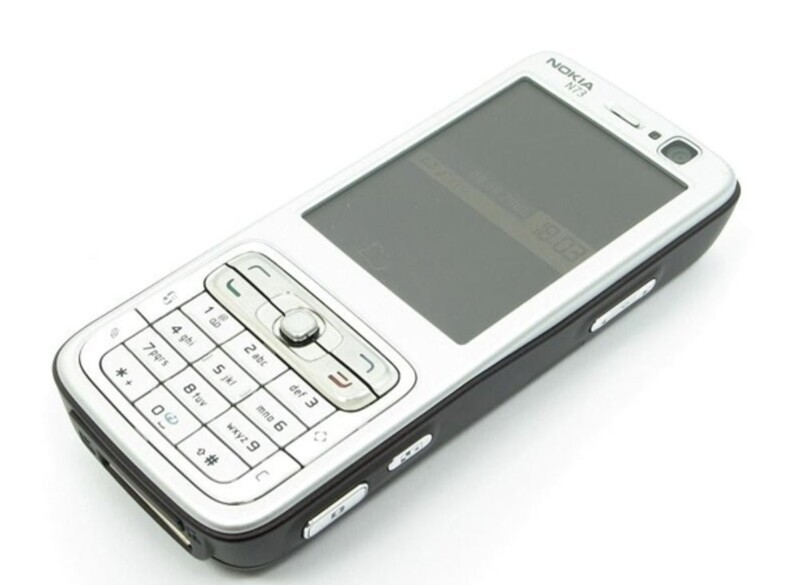
Nokia N73
One of the first phones with a 3.2 megapixel camera with high-precision optics. There is an autofocus system. Stereo speakers support 3D sound effect. Also equipped with a front VGA camera.
Motorola Q 
Motorola Q
A communicator with a QWERTY keyboard and the thinnest body. It is possible to synchronize with a computer and view documents in Word, Excel, PDF, PowerPoint formats. There is support for EV-DO.
BlackBerry Pearl 8100 
BlackBerry Pearl
Lightweight model with a compact QWERTY keyboard. There is support for GSM/GPRS, EDGE, USB, Hands-free car system. There is also a 1.3 megapixel camera with digital zoom and a slot for external MicroSD memory.
KDDI Penck 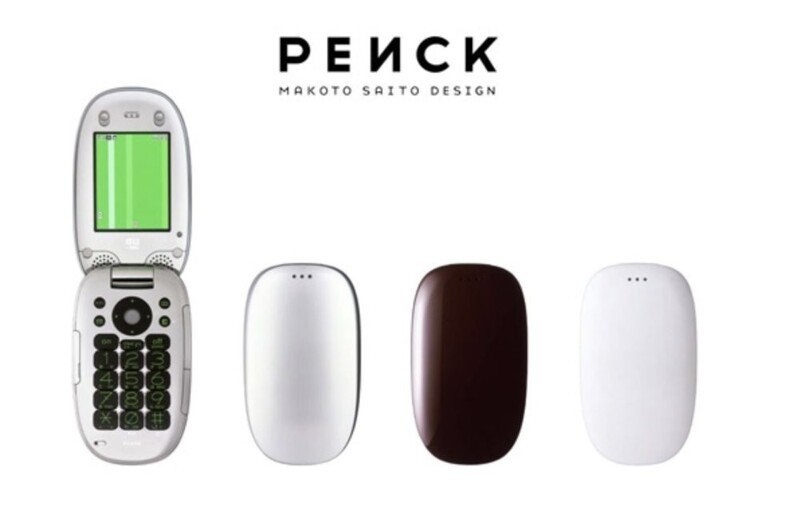
KDDI Penck
Japanese flip phone with a stylish oval body. Named after the German neo-expressionist artist A. R. Penck. Worked on a CDMA network. Equipped with an LCD display and a 1.24 megapixel camera.
O2 XDA Flame 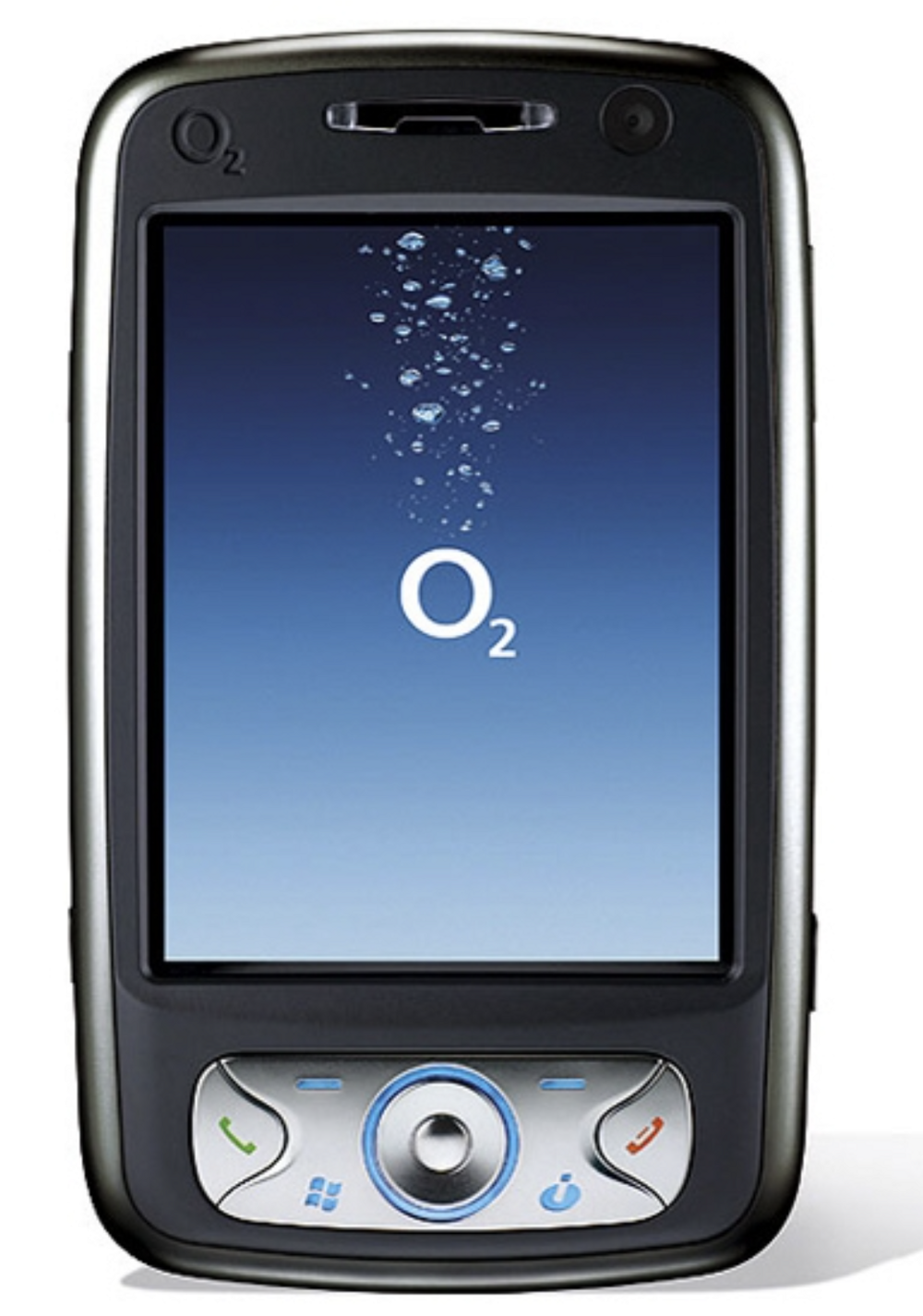
O2 XDA Flame
One of the most powerful PDAs running Windows Mobile 5.0 at that time. Had the first dual-core processor. It was also equipped with a new NVIDIA GoForce 5500 GPU and2 GB built-in memory.
Nokia E62 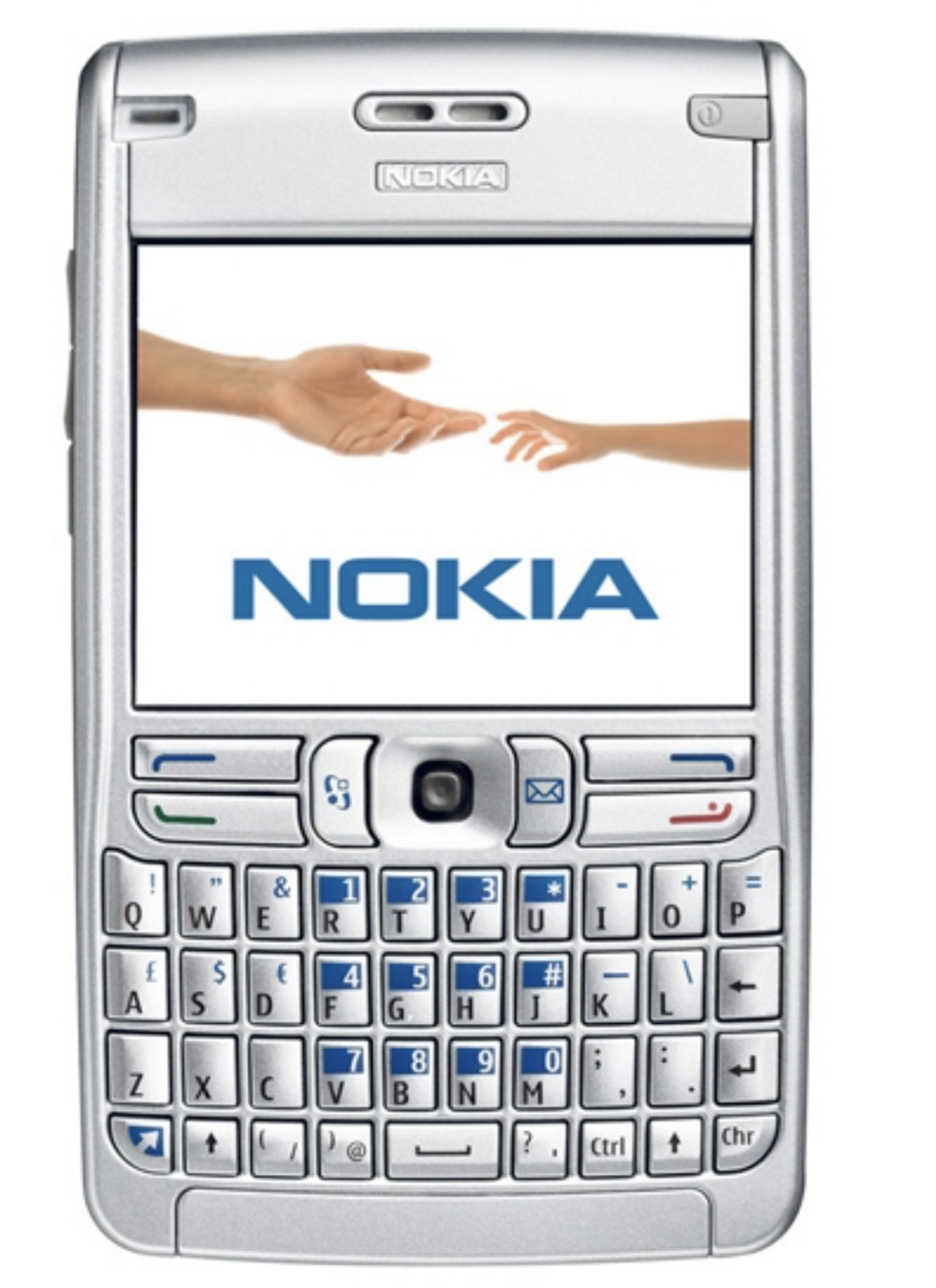
Nokia E62
Business class smartphone with QWERTY layout. Works in 4 ranges. Supports Direct Push, Xpress Mail, BlackBerry Connect services. Equipped with a QVGA display. There is a “hot swap” function for cards.
2007 iPhone 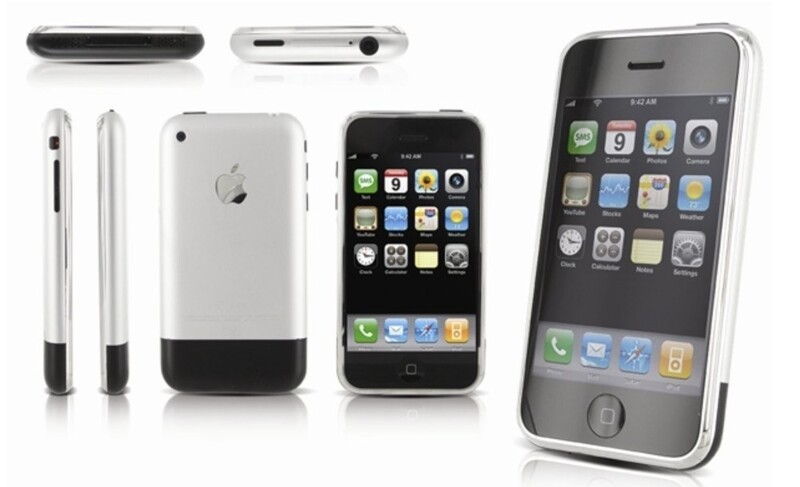
iPhone
The first iPhone was developed as an experiment, and it cannot be called technically perfect. Despite this, it was named the 2007 invention of the year. IPhone 1 ushered in a new round in the evolution of smartphones. It had no buttons or stylus. The keyboard was completely virtual. The device also had a multi-touch screen and an auto-rotate function. There was no support for 3G and MMS messages.
LG Prada KE850 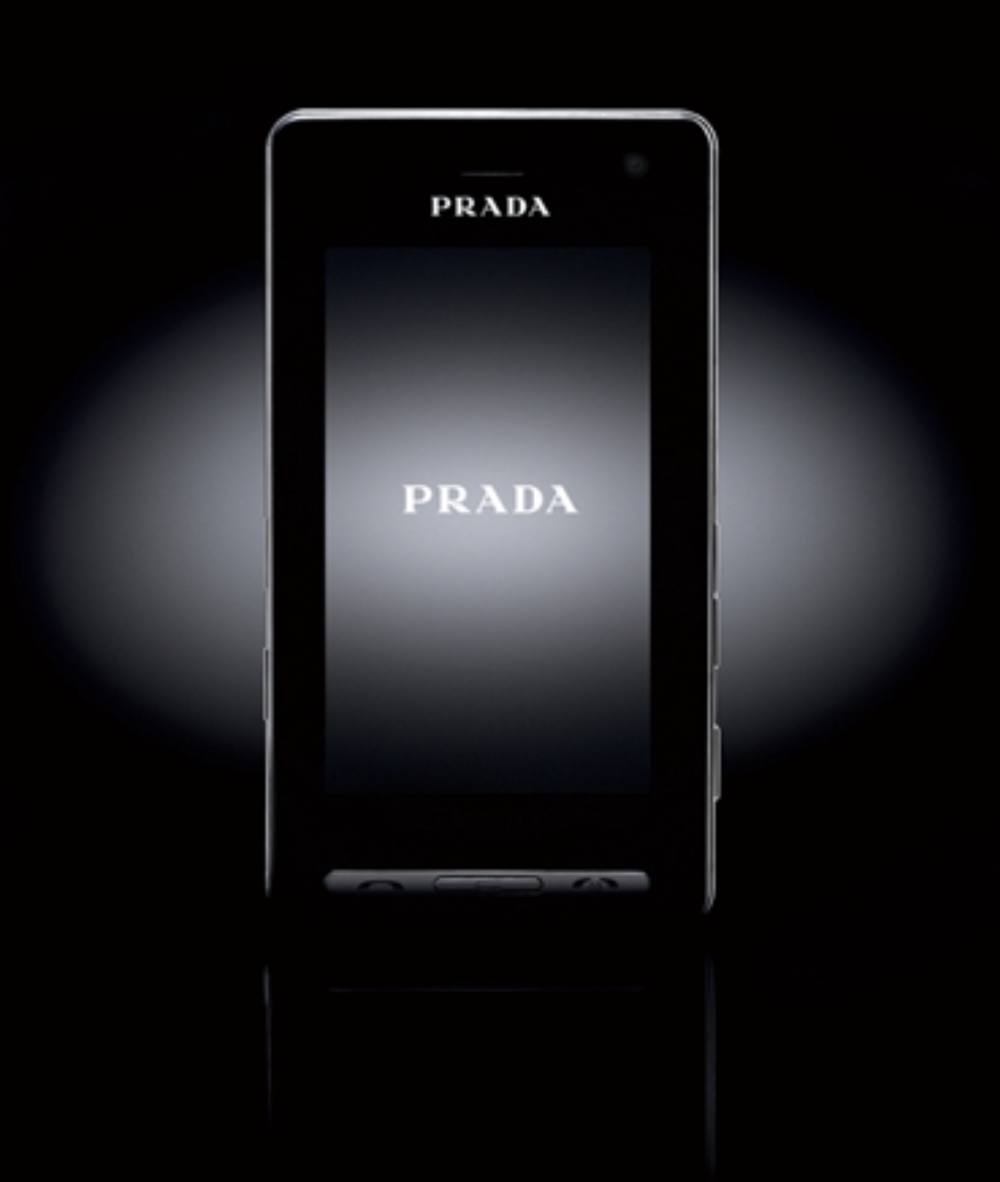
LG Prada KE850
Another representative of old touch screen mobile phones. It had a color TFT screen transmitting more than 262,000 colors, a 2-megapixel camera and a slot for flash cards. Awarded the Red Dot Design Award.
LG Voyager 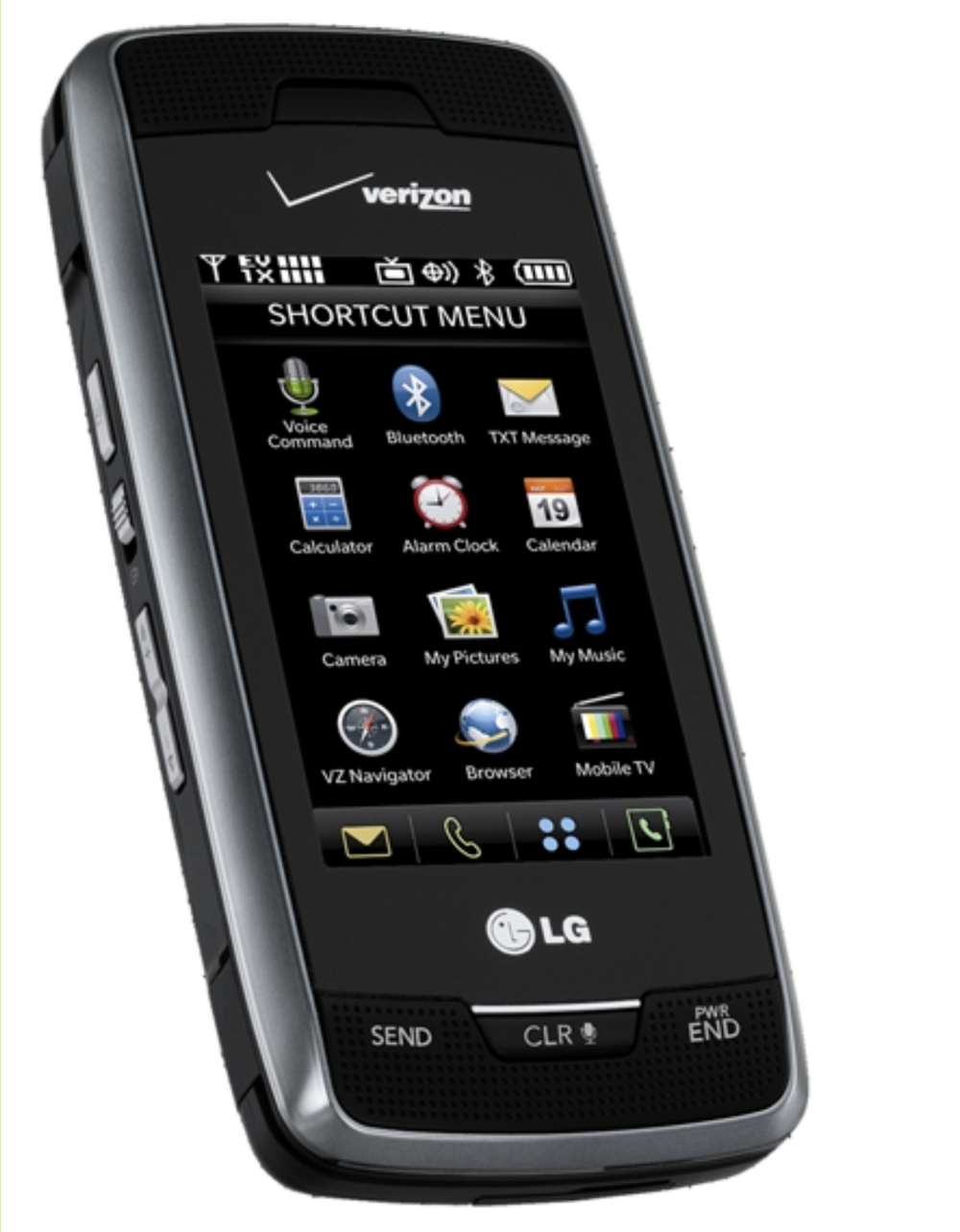
LG Voyager
Another answer to the iPhone is a buttonless smartphone with a virtual QWERTY layout. It has a 2 megapixel camera and 2.5x zoom. Works with SMS, MMS, E-mail. Allows you to put videos on wallpaper.
HTC Touch 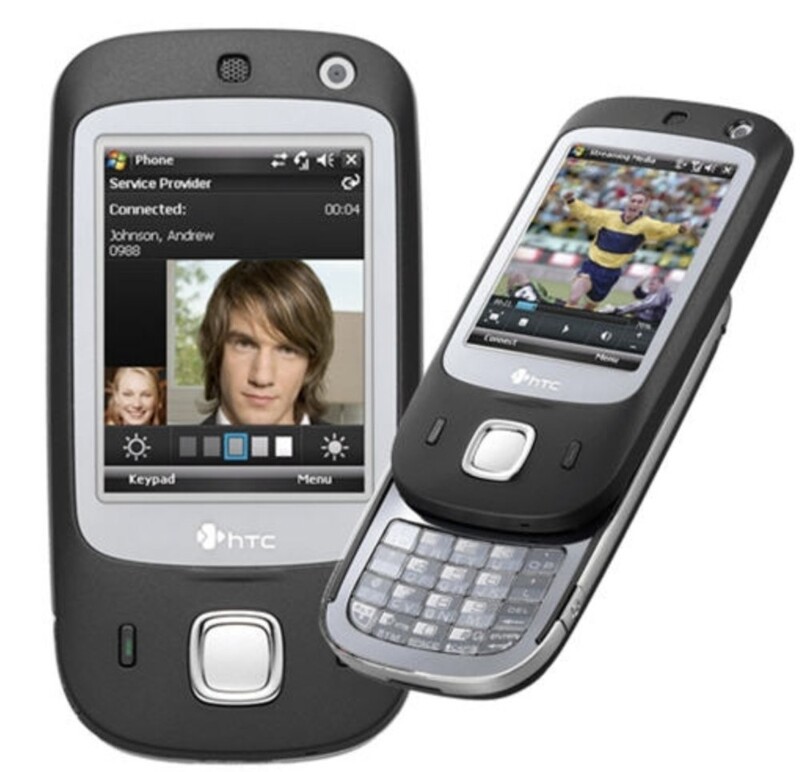
HTC Touch
HTC also could not ignore the appearance of the iPhone and released its touchscreen communicator with TouchFLO technology. HTC Home widgets on the home screen let you see the time, date, photo and weather.
Nokia E90 Communicator 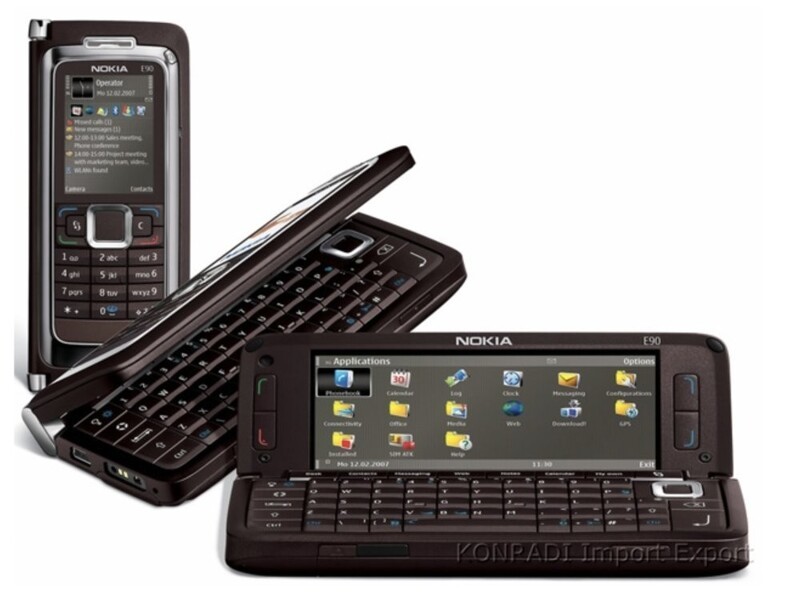
Nokia E90
Business PDA based on Symbian S60. It had two screens at once - external and internal. The second one appeared when the slider was opened. Nokia E90 was one of the first phones to support GPS.
LG Shine 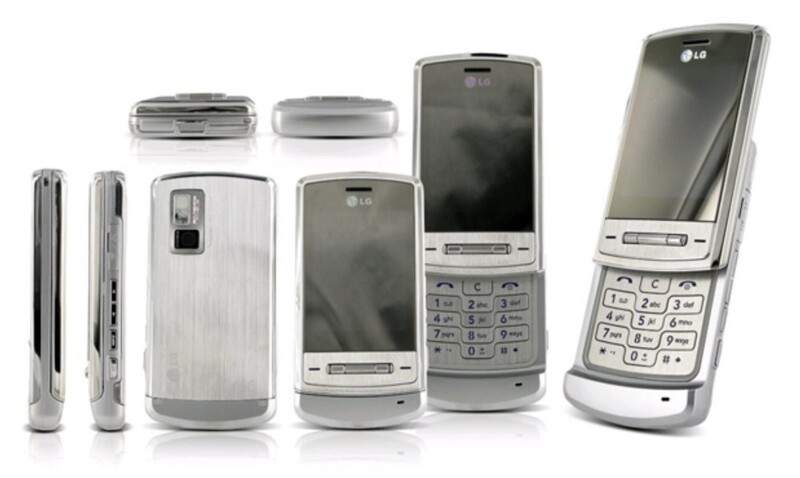
LG Shine
Steel slider phone. The LG KE970 (2007) model had a color screen that recognized up to 256,000 colors. In an inactive state it could be used as a mirror. An alternative to touch elements was 2 navigation buttons and a scroll bar.
2008 iPhone 3G 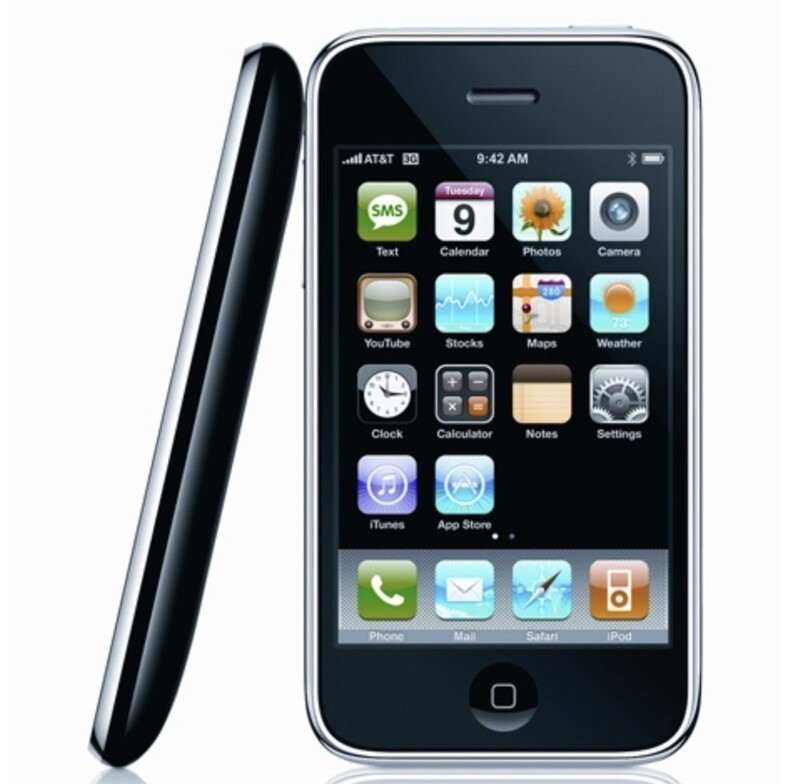
iPhone 3G
He was wildly popular. Unlike its predecessor, it supported UMTS, 3G, GPS technologies. Synchronization of the calendar, contact list and E-mail has also become available.
T-Mobile G1 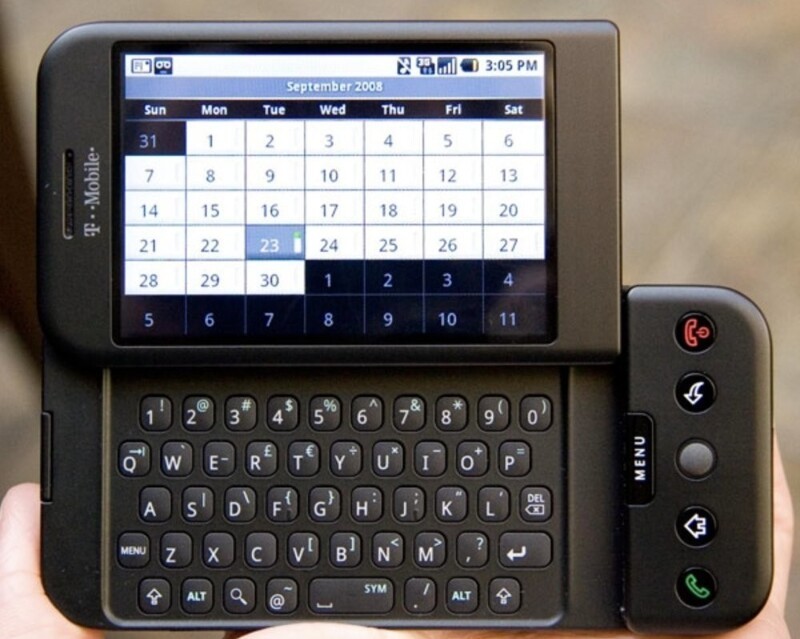
T-Mobile G1
A device made in the “side slider” format with a touch screen. The first phone running on the Android system. Among the features are a 2 megapixel camera, integration with Google Maps, and the ability to open several browser tabs at once.
Nokia N96 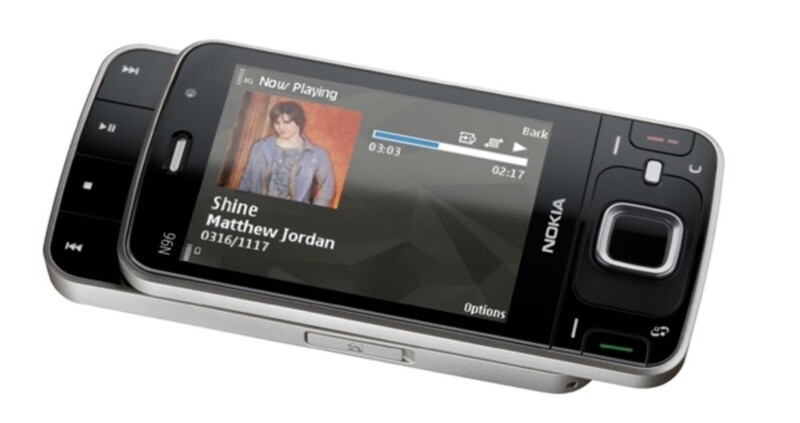
Nokia N96
High-level product with a slider body. It had the ability to be combined with the N-Gage 2.0 gaming service. The DVB-H standard was also supported.
Nokia 5800 XpressMusic 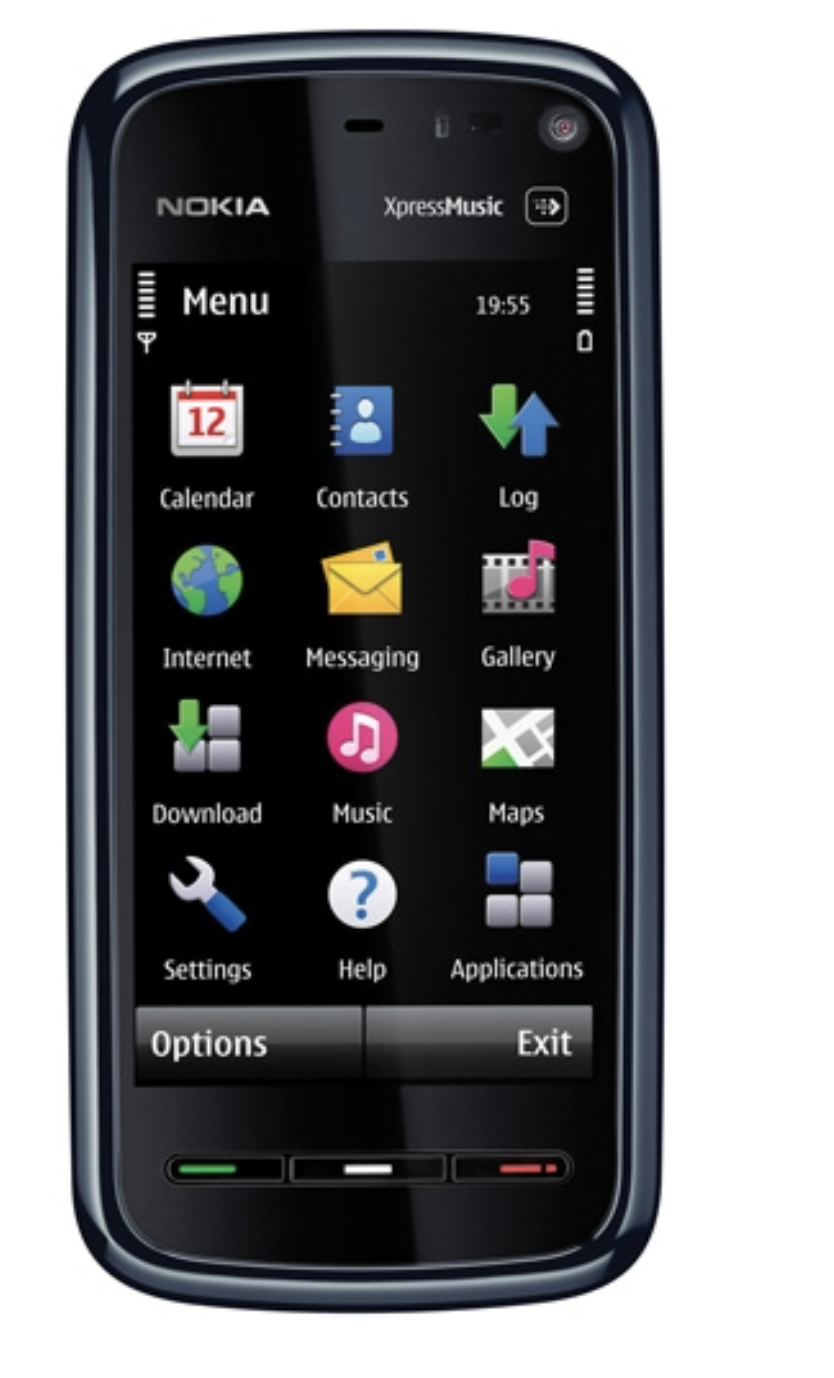
Nokia 5800 XpressMusic
This smartphone was intended to be nothing less than an “iPhone killer.” It had a convenient multimedia panel that provided quick access to music and other entertainment. Supported all major audio formats; The included flash card allowed you to save up to 6 thousand songs.
BlackBerry Storm 9500 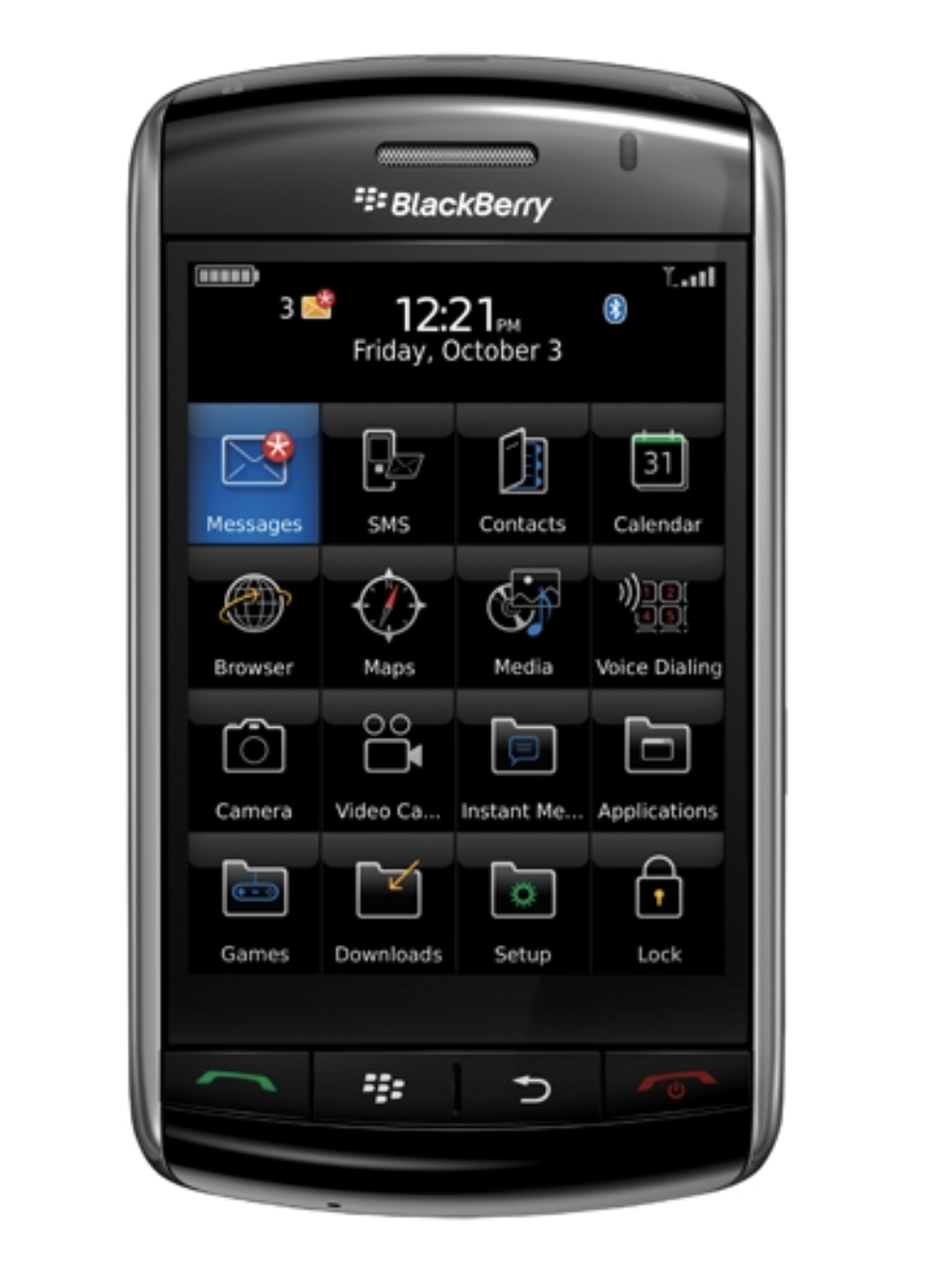
BlackBerry Storm
This model was developed as a competitor to the 3G iPhone. It was equipped with Click Through technology, simulating the sounds of a regular keyboard. The user could also work with text using gestures.
BlackBerry Bold 9000 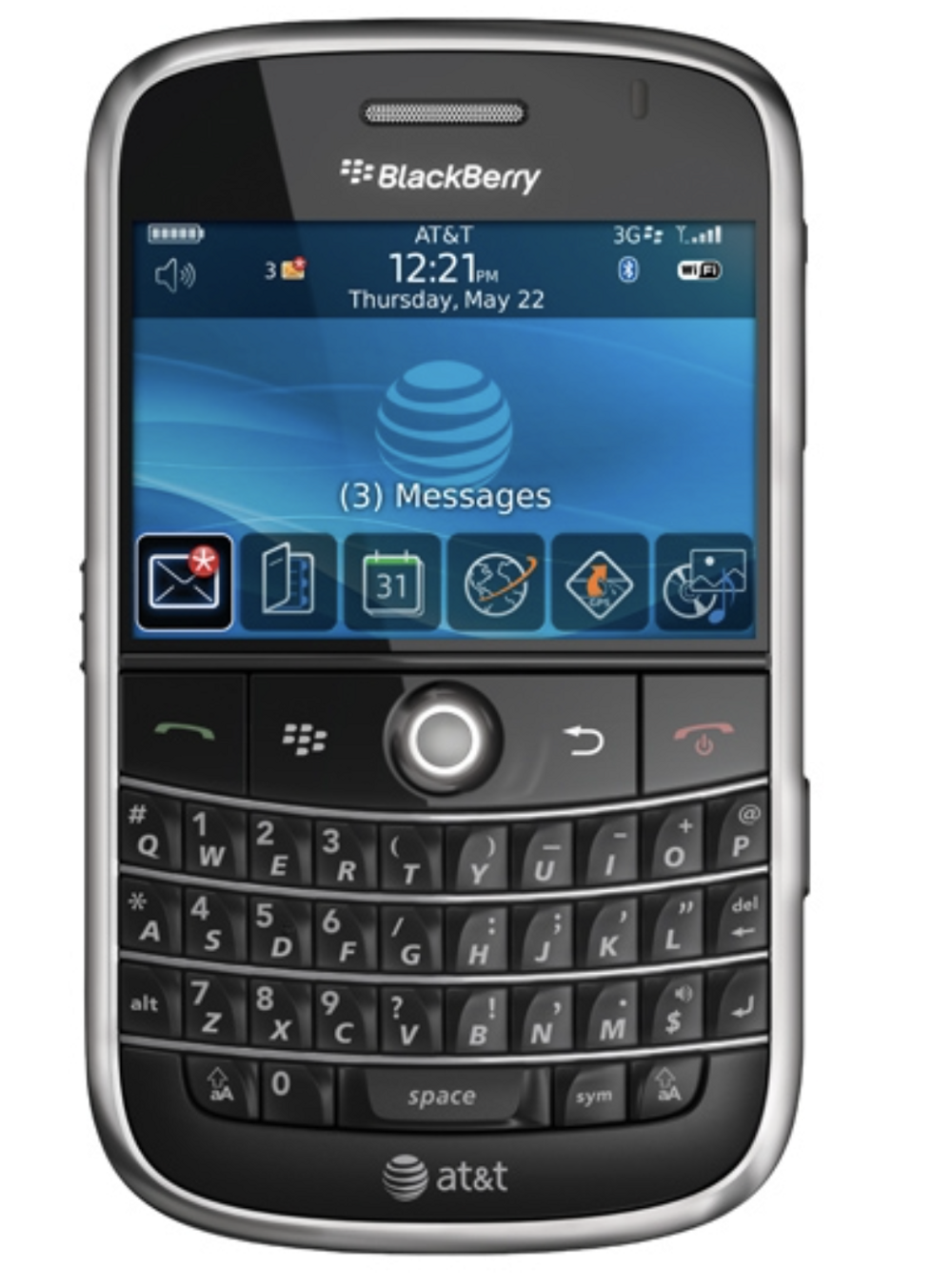
BlackBerry Bold
The first BlackBerry phone to combine 3G, Wi-Fi and GP supportS. Worked in 3 communication bands. It had a 2 megapixel camera, a USB connector and the ability to exchange instant messages.
Nokia E63 
Nokia E63
A budget option for devices with a QWERTY keyboard. It lacked GPS, a memory card slot, and a software disk. As compensation, the developers offered an annual subscription to the file-sharing service Files on Ovi.
Nokia N79 
Nokia N79
This push-button phone was positioned as “all in one”. It had a 5 megapixel camera with dual LED flash, an OLED display with 16 million colors, a motion sensor, and a slot for a memory card. It had support for 3G, Wi-Fi, GPS, TV output, FM radio.
HTC Touch Diamond 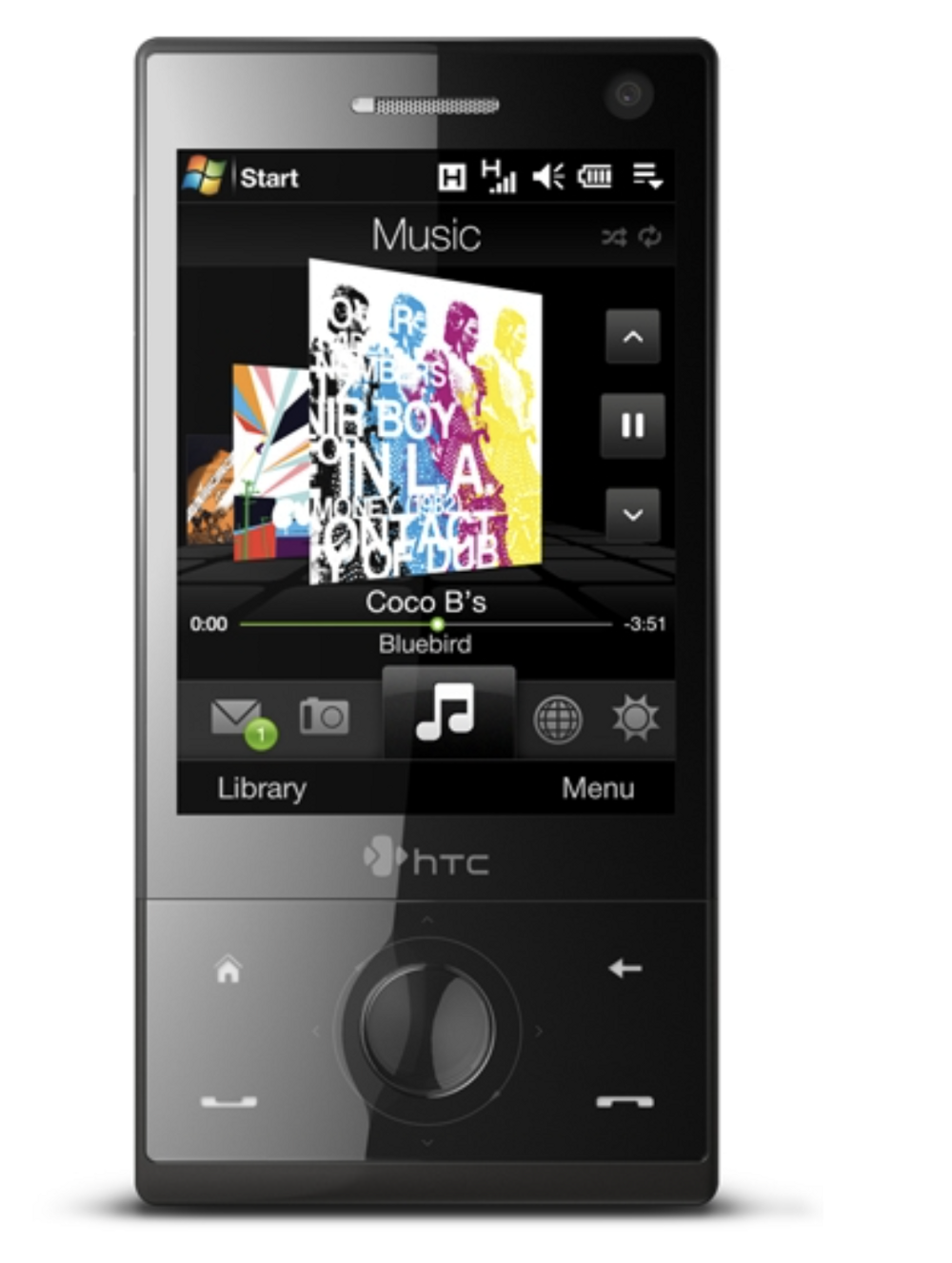
HTC Touch Diamond
The first PDA from HTC to have a 528 MHz processor. Provided extremely high productivity for those times. The back of the gadget was creatively designed in the form of diamond edges.
Nokia E71 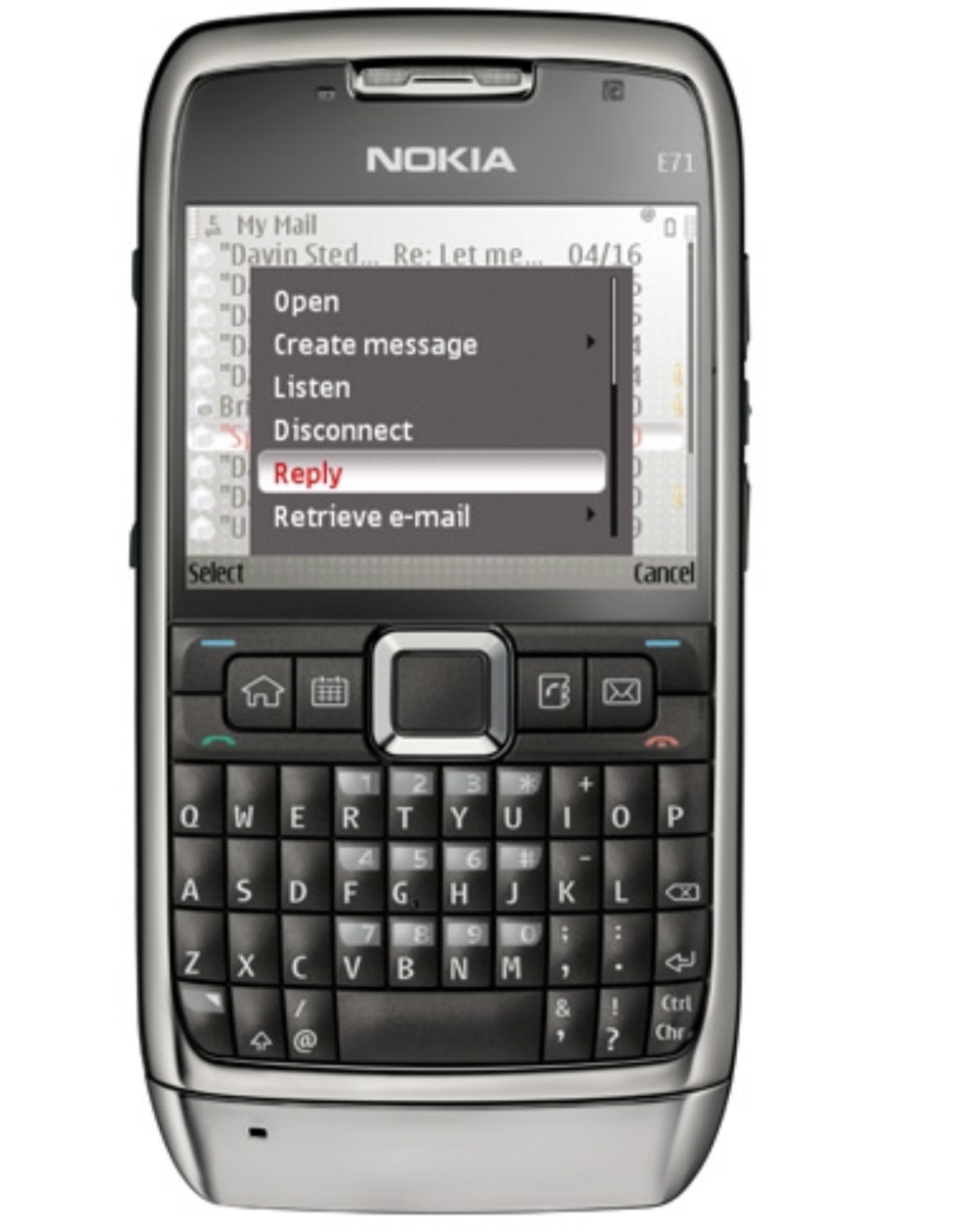
Nokia E71
Business class push-button telephone with QWERTY keyboard layout. It was aimed primarily at Internet users. It had a protective glass, a camera on the front side and a light sensor.
year 2009. Prada II or LG KF900 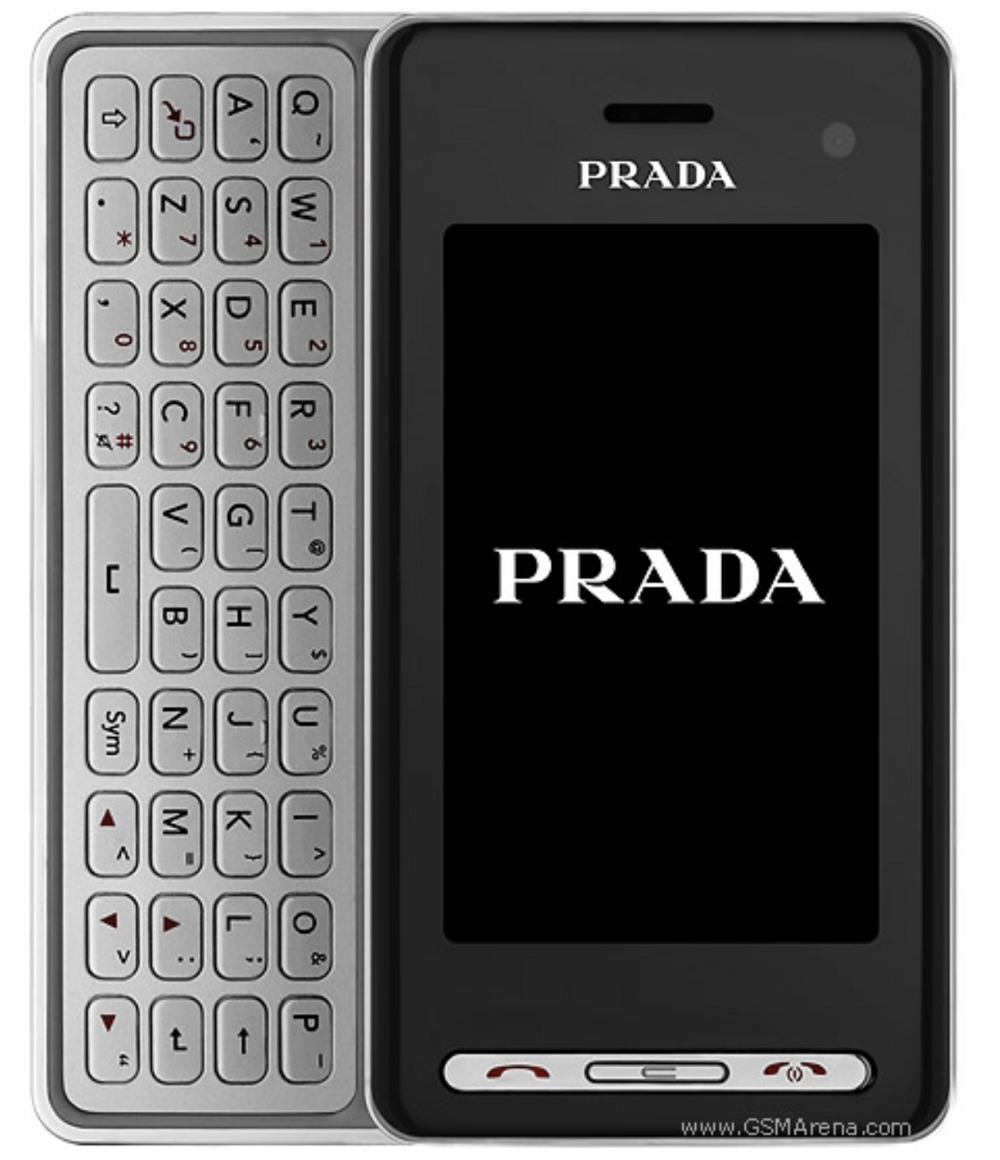
Prada II or LG KF900
Slider model with a sliding QWERTY keyboard and touch screen. There is support for Wi-Fi, 3G, Bluetooth; There is a slot for a memory card. Camera - 5 megapixels with autofocus and rear flash.
LG Arena (KM900) 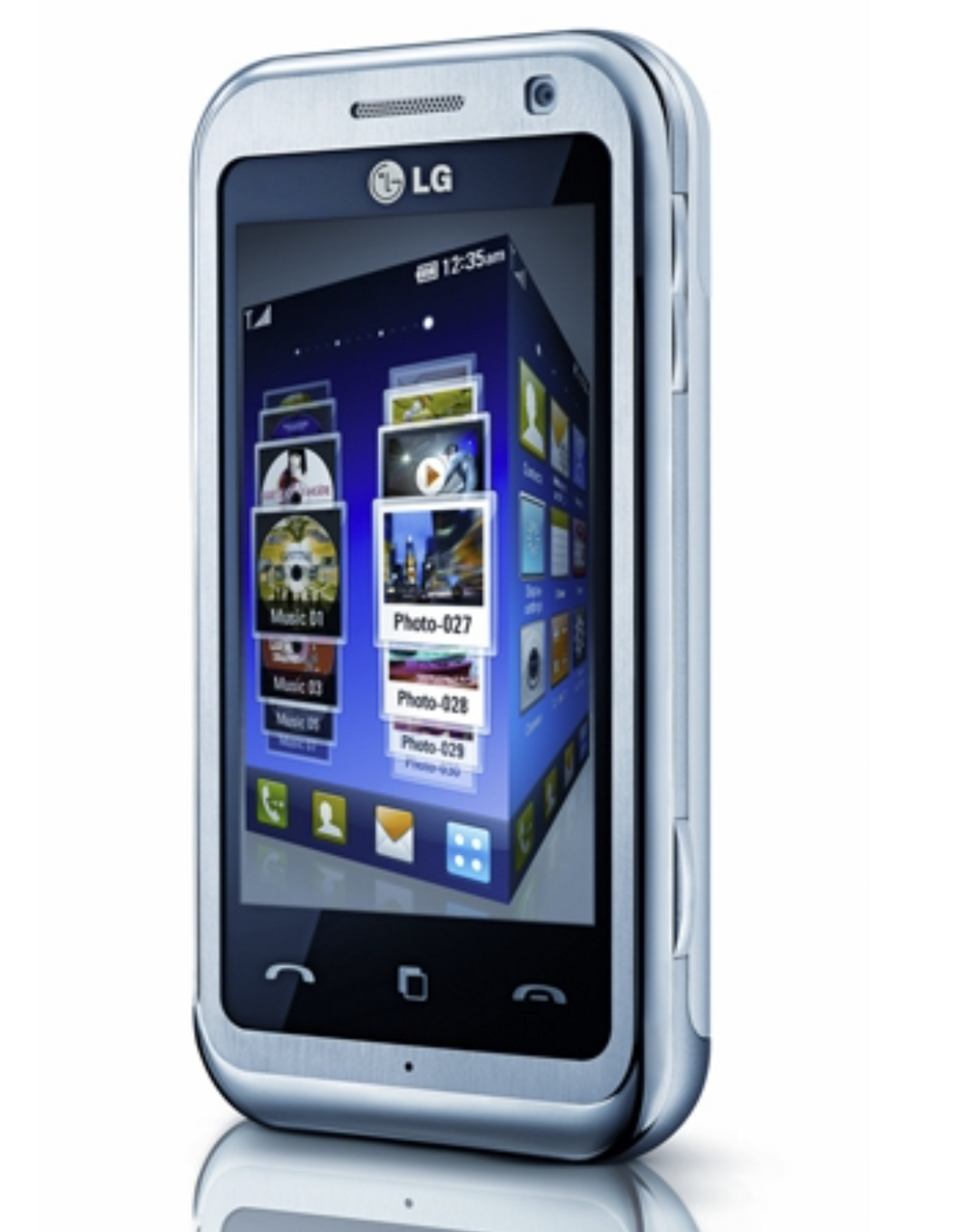
LG Arena
Multimedia flagship with high-quality transmission of sounds and images. 40 GB of memory was more than enough to store music and movies. The battery life is impressive: 30 hours of continuous playback of audio files and up to 300 hours in inactive mode.
HTC Magic 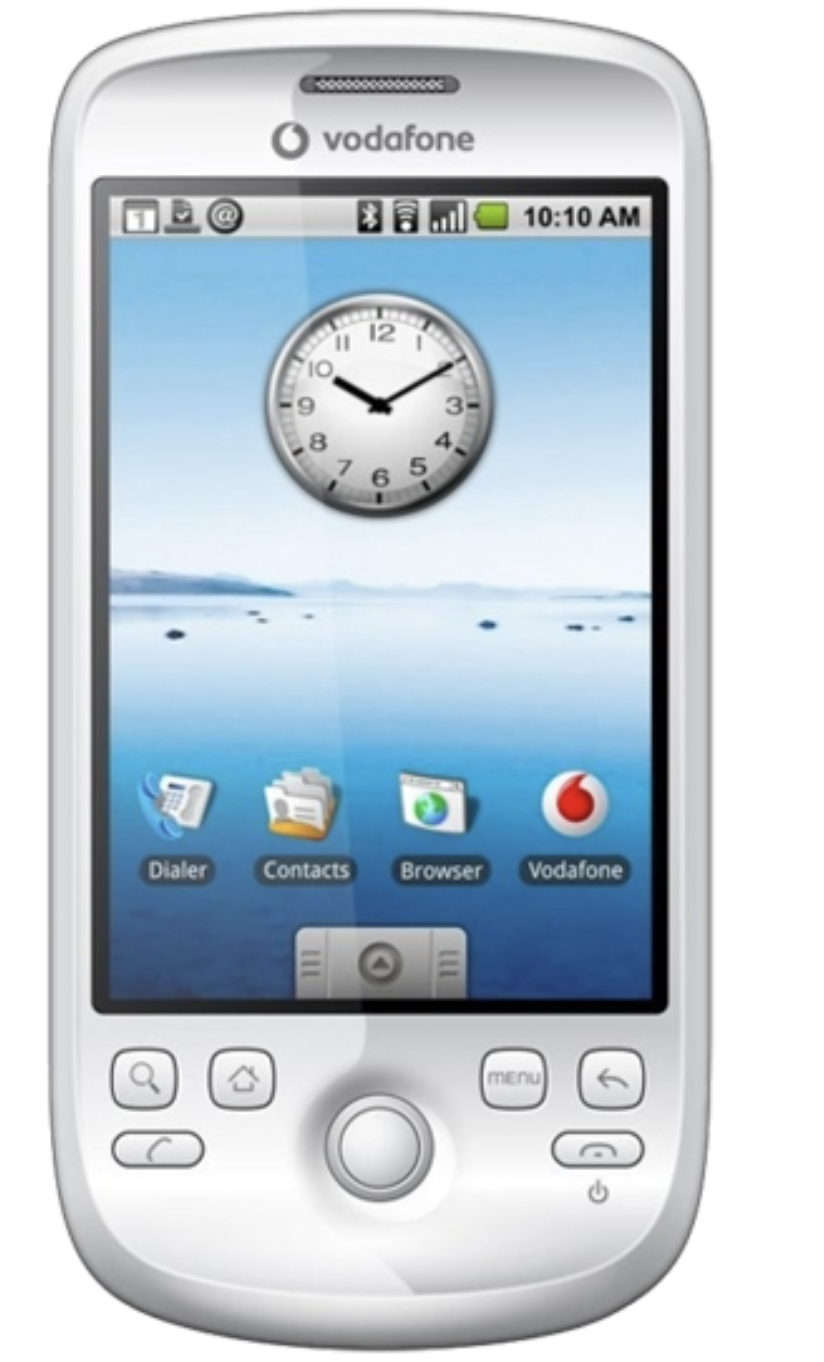
HTC Magic
Touch phone on Android. Control is partially carried out using a trackball. There is a built-in digital compass, voice memory, and handwriting recognition function.
iPhone 3GS 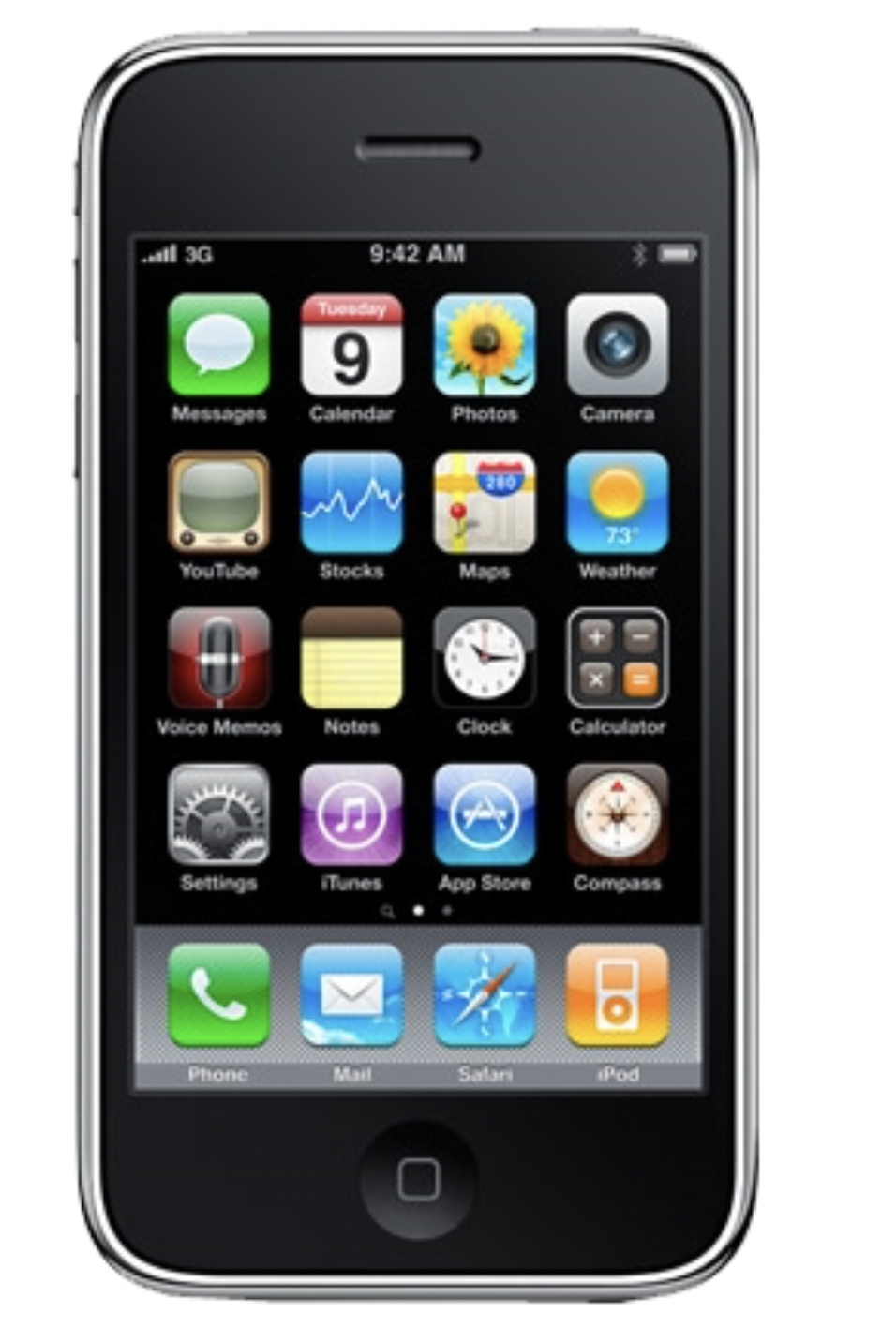
iPhone 3GS
As the manufacturers stated, this generation of iPhones was 2 times faster than previous models. The evolution is reflected in the name: “S” - from the word “speed”, “speed”. The iPhone 3GS came with voice control. A slider has been added to the camera to switch between photos and videos. The battery capacity has also been increased.




